
I’ve procrastinated on completing my playthrough 15 of Baldur’s Gate 3. The reason isn’t obvious. I’ll get into it in a future post.
One of my procrastination tools is playing through some of the original BG games: Baldur’s Gate (1998), Baldur’s Gate II: Shadows of Amn (2000), and Baldur’s Gate II: Throne of Bhaal (2001). I’ll refer to the first game as BG1 and the latter two collectively as BG2.
There were other BG games published. However, those three have a connected storyline that’s typically referred to as the “Bhaalspawn Saga”. The story they tell forms the background of Baldur’s Gate 3‘s story. I played BG1+2 as a deep dive into the BG lore, to further illuminate my BG3 experience.
I’ll be a good person and give a SPOILER ALERT: I will freely discuss plot details from games that were released around 25 years ago. I’m also going to include minor spoilers for BG3, mostly for plot details that I’ve discussed before (with varying degrees of spoiler alerts) in my previous BG3 posts; for example, that Jaheira and Minsc, introduced in BG1, are available as player characters in BG3.
How are they as games?
I’m going to commit my usual sin of talking about BG1‘s and BG2‘s systems before I get into the juicy plot stuff. If you read my posts for cool pictures and fanfic, skip to the next section.
You can purchase Baldur’s Gate and Baldur’s Gate II: Enhanced Editions in a $50 bundle that runs on both the PS4 and PS5; you can get a similar package on Steam. It includes all the expansions and additional campaigns associated with the Bhaalspawn saga. (The Baldur’s Gate: Dark Alliance games are not included.)
Are these games worth playing? My answer is mixed:
-
I played the main games in Story mode.
This is a “true” story mode, in that the game almost plays itself. It’s similar to the easiest modes in Nier: Automata, Senua’s Saga: Hellblade, and Control. Once combat starts, You can put the controller down and watch the enemies fall. Your characters cannot die. At the absolute worst, it may be that they’ll be ineffective against the strongest opponents if you don’t gear them up; for example, there are creatures that can only be hit with weapons of +3 or higher.
The console interface complicated things at times. The most annoying is when you want to use lockpicking or disarm traps. Folks who complain about doing these actions in BG3 should try doing them in BG1+2 with a controller.
There is only one item your character carries that the game’s programming will use automatically: healing potions. Otherwise, the game will automatically cast spells that your character knew, but never from scrolls, nor will it automatically use abilities associated with magic items. If you want to see items used, you have to micro-manage the characters.
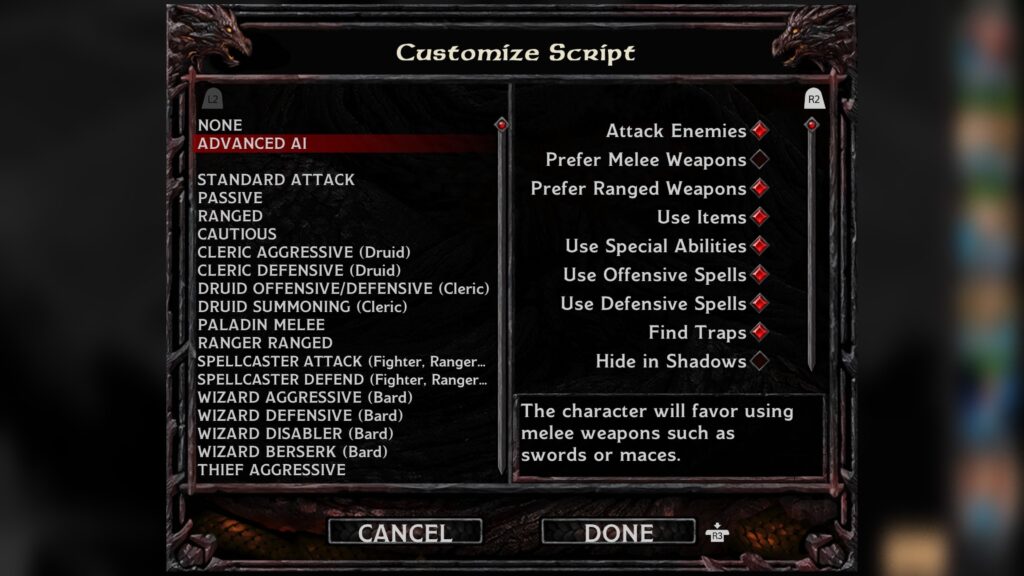
You have nominal control over the AI script used to determine your character’s actions. As near as I could tell, “Use Items” and “Use Special Abilities” didn’t do anything. 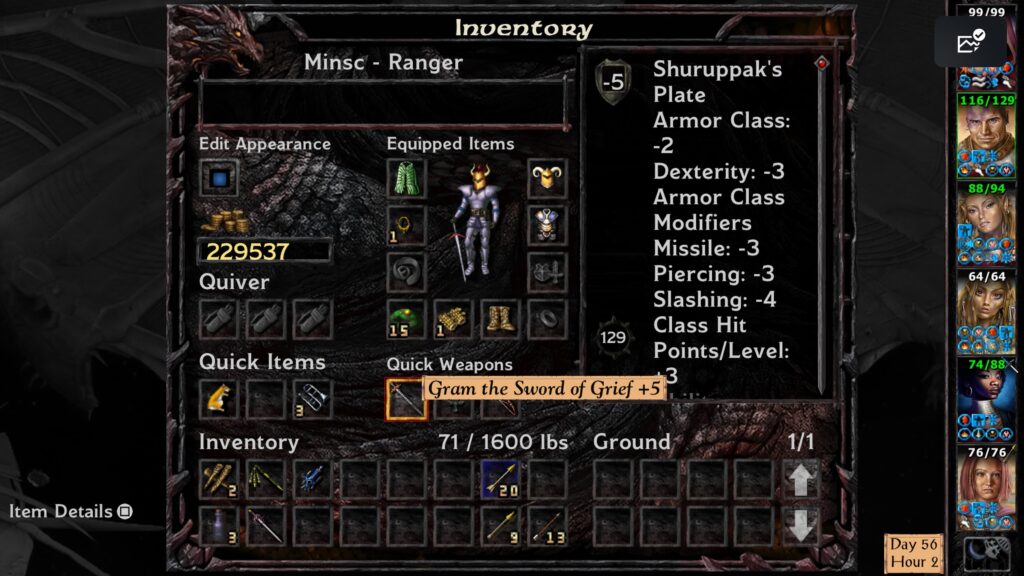
For example, if you put healing potions into Minsc’s “Quick Items” slot, he’ll consume them automatically. However, he’ll never automatically use Boo in combat, even though Boo is right there. You have to pause combat and select Boo yourself. With that said, I appreciated Story mode. I played these games for the story and the lore. To that end, Story mode fitted my needs perfectly. I wish more games were willing to do this.
-
Anyone looking for the graphical sophistication of BG3 is going to be disappointed.
The look of the game, that of small sprites moving in an isometric view, was new and exciting in 1998. It seems incredibly primitive now.
One of the pleasures of these sorts of games is watching how your character’s appearance changes as you acquire more sophisticated gear. This can be seen in a game like Diablo, which was released in 1997.
There’s little of that here. You can see the character’s armor and weapons in the character’s inventory screen, but when you’re actually playing, the tiny images are basically undifferentiated blurs. You can just barely make out that your character is wearing a silvery chestpiece instead of a brown one.
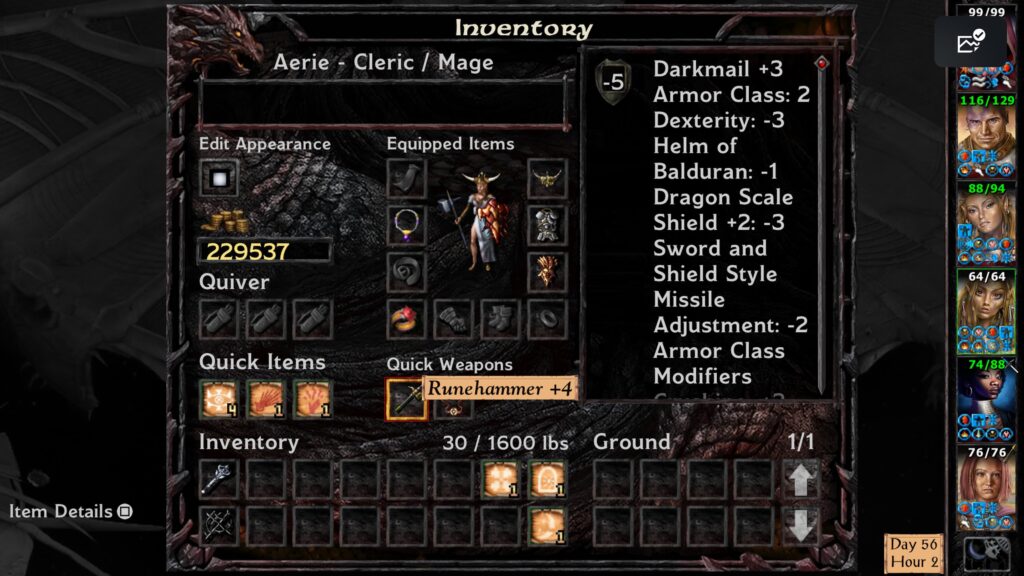
A typical character inventory screen, from near the end of the game. The resolution of the character’s image on this screen is higher than what you see in standard gameplay. This is not a criticism, merely an observation. BG1+2, like BG3 now, is a creation of its time.
The characters are not fully voiced either. I’ll get into that below.
-
The games use the second edition D&D rules (D&D2e).
I’ve loathed D&D since 1978. I loathed D&D2e when it came out in 1989. I loathe it now.
Therefore, I cannot possibly give you an unbiased opinion of the BG1+2 rules system.

Spell slots are among the reasons I don’t like D&D. BG1+2 embrace the concept whole-heartedly, with the D&D2e system being even more restrictive than the D&D5e system in BG3. Here you see where you have to pick which specific spells you’ve memorized at a specific level. If you want to cast Dispel Magic but didn’t memorize it, you’re out of luck; you’ll have to pick a new set of spells to memorize during your next Rest. For what it’s worth, the game seems to have a complete implementation of D&D2e. I was brought back to the days of THAC0 (“to hit Armor Class 0”), in which the lower the AC was, the better it was. It led to ACs with negative values, which perhaps had value teaching negative numbers to a generation of youngsters who were failing basic math. I managed to get one of my characters to AC -7. Yay?
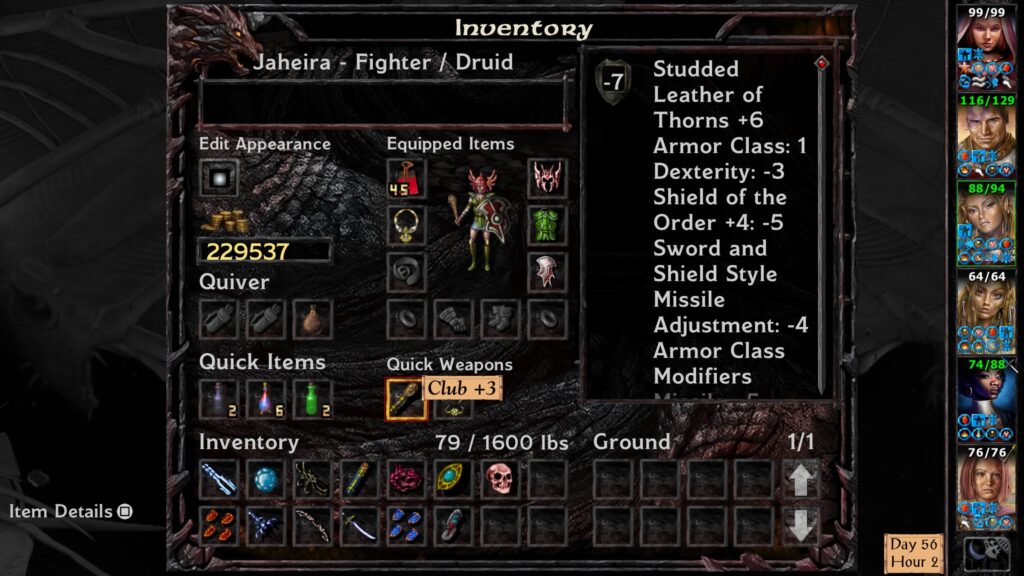
In writing this essay, I discovered that it was Jaheira who got to Armor Class -7. Good for her! BG1+2 also implements the Alignment system, in which a character’s actions and morality are reduced into a 3×3 chart. My character was initially labeled “True Neutral” by the game. Since I tried to have her do only “good” deeds, perhaps the game penalized me for acting outside my alignment, but I never noticed due to Story mode. I did get the occasional threat from the Good-aligned characters that they would leave the party, but none ever did. Nor did the Evil-aligned character I had in the party; more on her later.
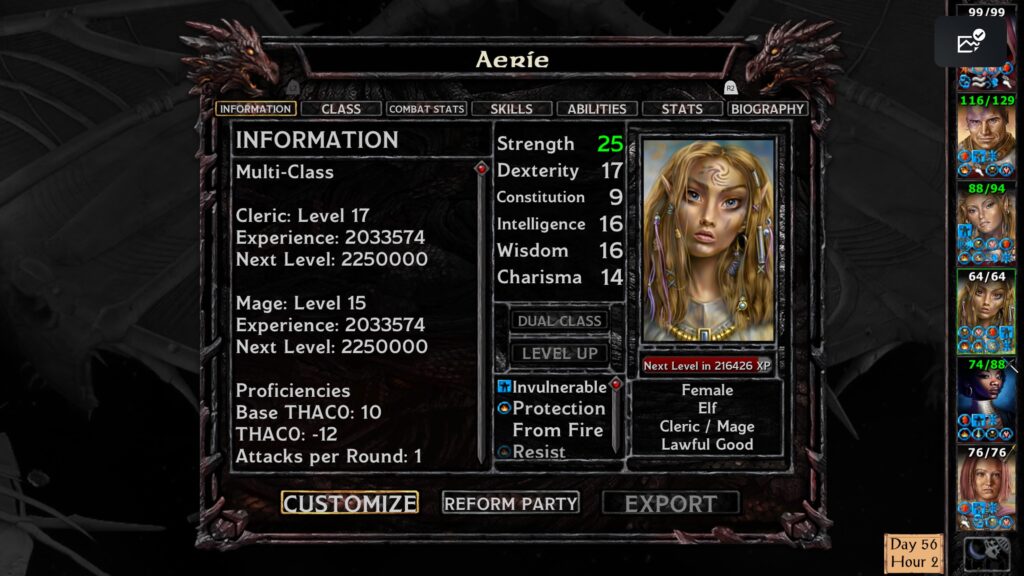
Here we see that Aerie was Lawful Good. How she put up with being in party with a Neutral Evil character is beyond me. Because I played in Story mode, every character’s Strength was set to 25. (The exception was Hexxat, whom we’ll meet later.) -
I played through BG1+2 in 66 hours. That, in and of itself, is reasonable value for a $50 game these days.
If I played the game outside of Story mode, I would have had to micro-manage the characters in combat. This would have made the game much longer. My guess is that it would have taken me at least five times as long, probably more from having to replay combats that I would have lost.
-
The games have a high degree of replayability. Like BG3, the major story beats are always the same. However, there are many sidequests. I only investigated a few of them. There are puzzles I never solved, characters I never met, locations I never visited.
The story of the world reacts depending on the choices you make. I made mostly “Good” choices. You can play making mostly “Evil” choices if you wish. As I noted above, the full panoply of D&D‘s nine-fold path is available to you.
-
If the question is whether these games are good value for the money, based on length of play and replay value, I’ll answer yes.
Are they good as a resource for BG3-related lore? I’ll give a conditional yes, though I acknowledge one might learn more from browsing pages in the Forgotten Realms wiki.
Are they worth it for the gameplay? My answer is no, both when they were released and now. Take that opinion with a grain of salt, of course.
Story
You can stop scrolling and start reading again.
The story of your character in BG1 begins in Candlekeep, a library-fortress. You were raised by the sage Gorion. You remember nothing of your past before Gorion adopted you.
One day you’re told that you must leave. As the two of you travel out of Candlekeep, Gorion is killed by large armored man named Sarevok. You are forced to flee.
You have to make your way in the world, to find out why out Gorion was killed, who you are, and why so much of the world’s destiny seems to revolve around you.
You almost immediately meet Imoen. She’s younger than you are, an orphan like yourself, and was also raised in Candlekeep. She witnessed the slaying of Gorion, and offers to accompany you. If you accept, she becomes your first companion.
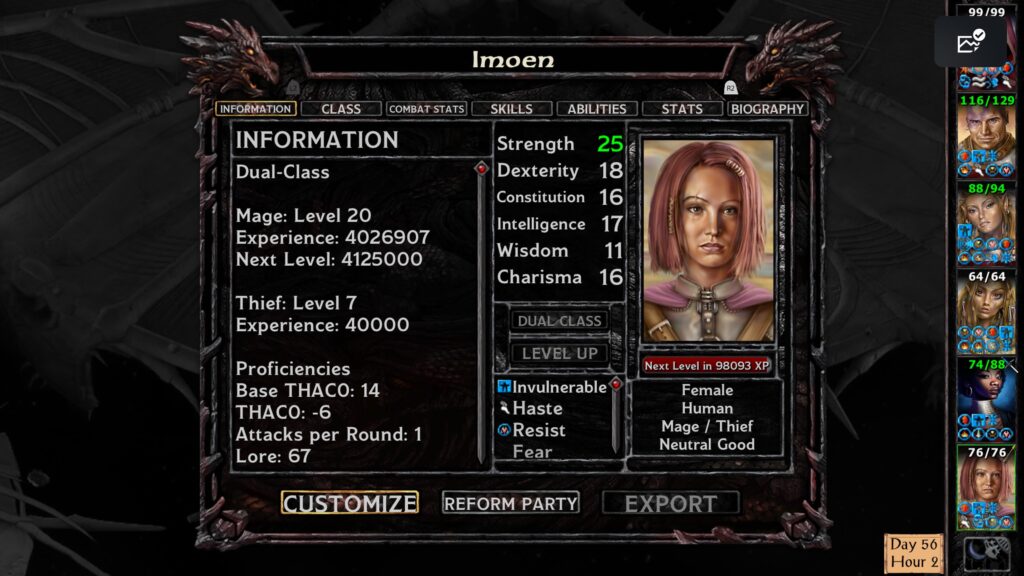
In the game you’re generally referred to as “Gorion’s Ward”. However, you can pick any name and class for your character. I picked…

… a Druid named Angela.
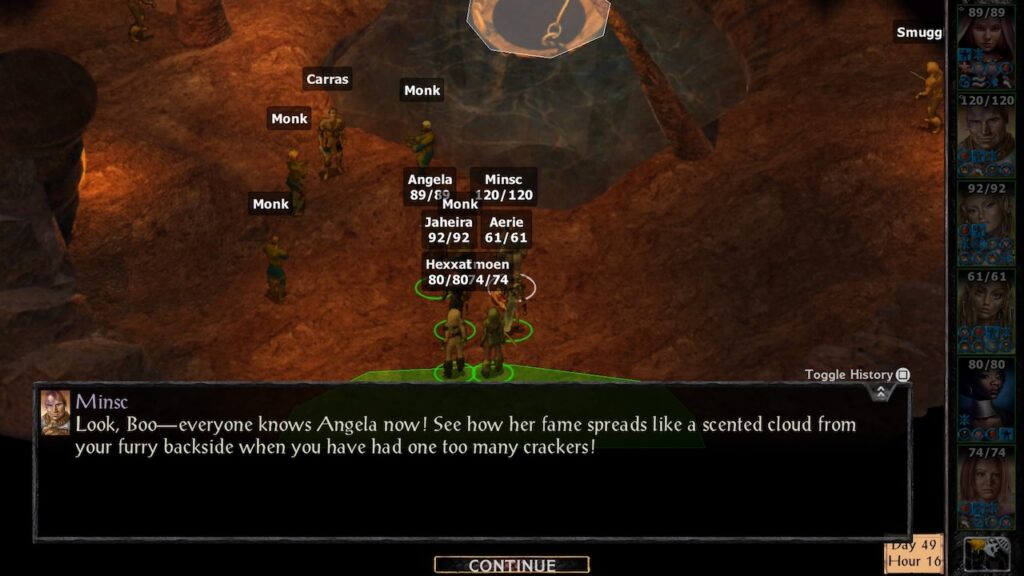
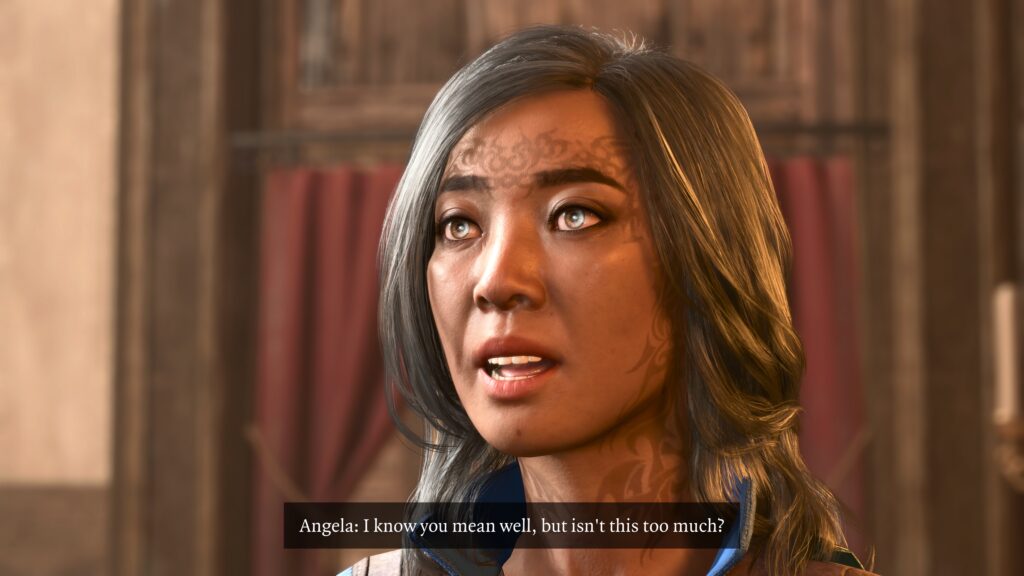
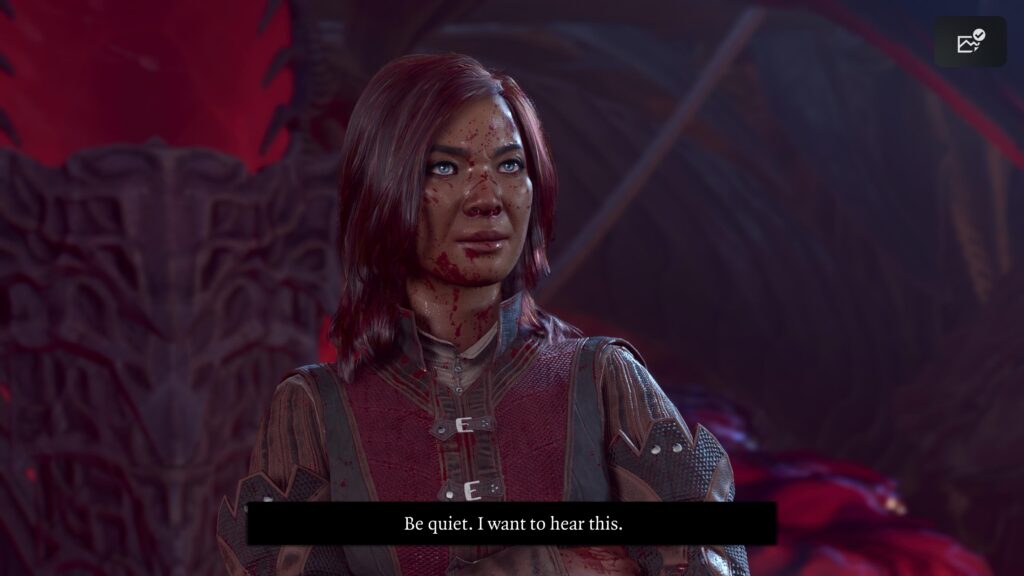
Umm, well… yes. As I was saying, in my playthrough of the Bhaalspawn Saga, the role of Gorion’s Ward was fulfilled by Druid Angela.
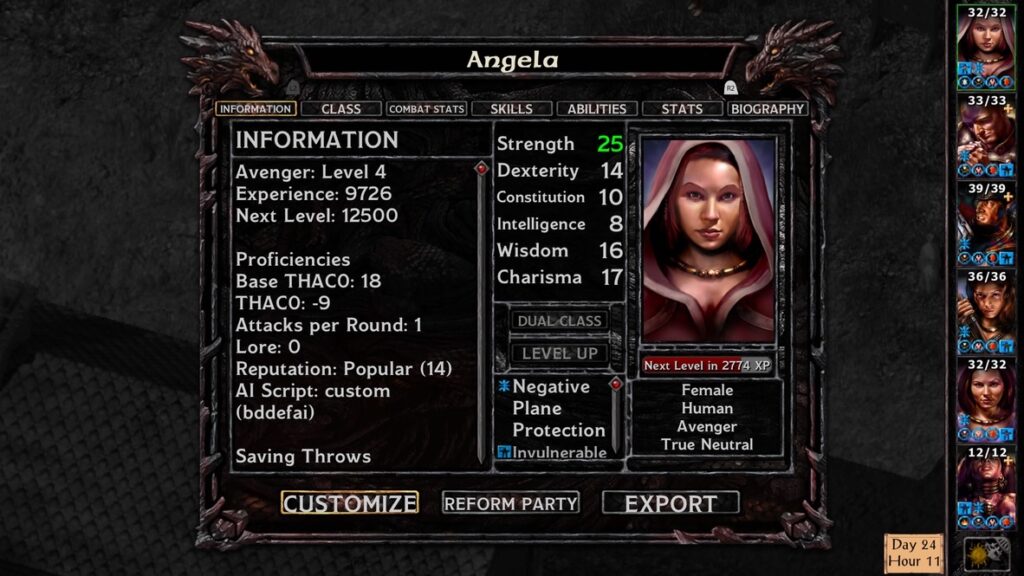
As you play, you’re offered the choice of adding more companions to your party. BG3 limits you to a party size of four (including your own character); BG1+2 allow a party of six. Plus you have a greater range of choices; I count 29 potential companions in BG1.
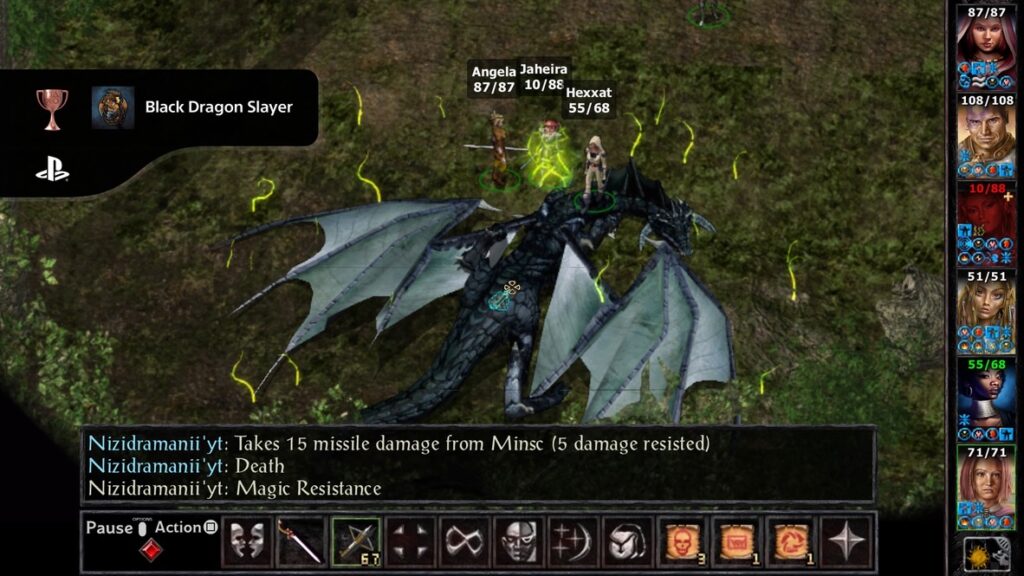
Each companion I encountered during the game had their own potential companion quest. There are also other sidequests available in the game apart from those connected to companions. From this I conclude that the breadth of potential quests in BG1+2 exceeds that of BG3. However, bear in mind that the quests in the earlier games are not individually voiced with detailed cutscenes, as they are in BG3.
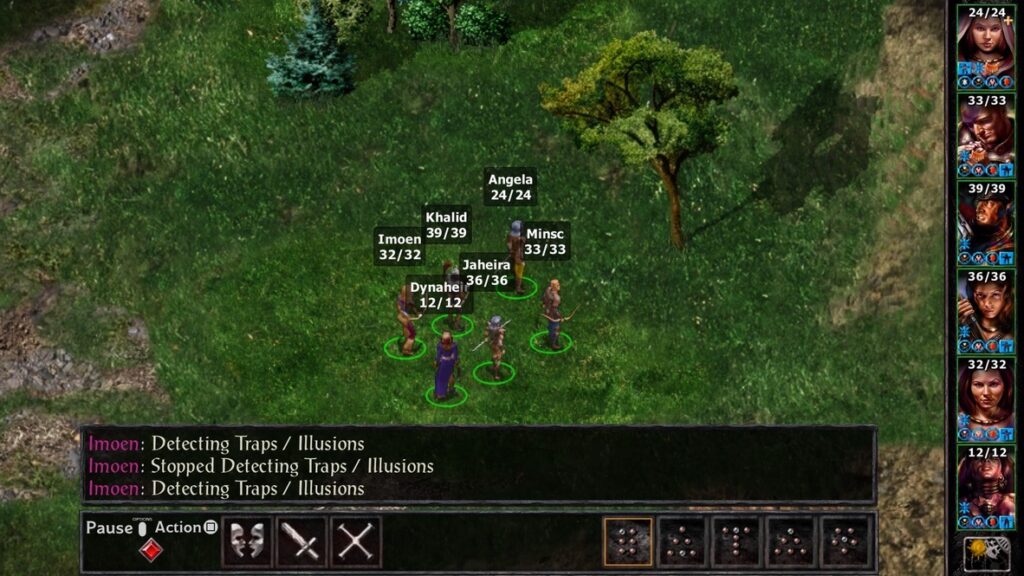
I settled on my final party based mostly on my experience with BG3:
- Angela – my character.
- Imoen – as noted above, the first potential companion you meet. She’s perky and cool to have around. I included her as much as I could, given that she’s forceably removed from the party for a time in BG2.
- Jaheira – the same character as in BG3.
- Khalid – Jaheira’s romantic interest in BG1. In-between BG1 and BG2, Jahiera and Khalid are married. Then Khalid is murdered just before BG2 begins, giving Jaheira a motive for revenge. (At least it’s not a woman who’s fridged this time.) In BG3 he’s mentioned briefly if you choose to visit Jaheria’s home in Act 3.
- Minsc – Again, the same character as in BG3. Boo is with him as well.
- Dynaheir – She’s a witch under the protection of Minsc. She’s killed between BG1 and BG2, leaving Minsc without a witch to protect. She’s also mentioned in BG3 if you choose to have extended conversations with Minsc.
The dynamics of the companions are more complex in BG1+2 than they are in BG3:
- Some companions are linked. For example, if you try to dismiss Khalid, Jaheira will leave the party too.
- This wasn’t true of any of companions I chose, but some pairings actively dislike each other. It’s possible for them to fight to the death, forcing you to choose. (This happens in BG3 as well, but only once, and you can talk them out of it.)
- The opposite is true: Some companions are infatuated with others. This is reflected in their banter with each other.
In BG2, there were gaps in my party’s line-up due to the loss of Khalid, Dynaheir, and (temporarily) Imoen.
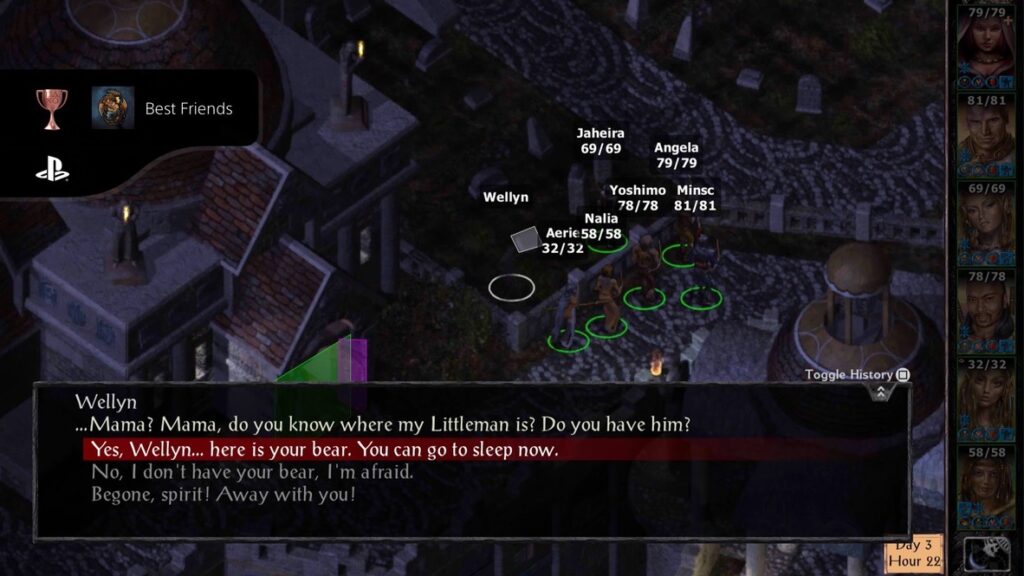
I replaced them with:
- Nalia – an immediate replacement for Imoen. In the interval of time between my having her in the party and my writing this essay, I’d completely forgotten that she existed.
-
Aerie – a member of a rare race of winged elves, whose wings had been torn off. Minsc “adopts” her as his new witch, and becomes her bodyguard with her consent.
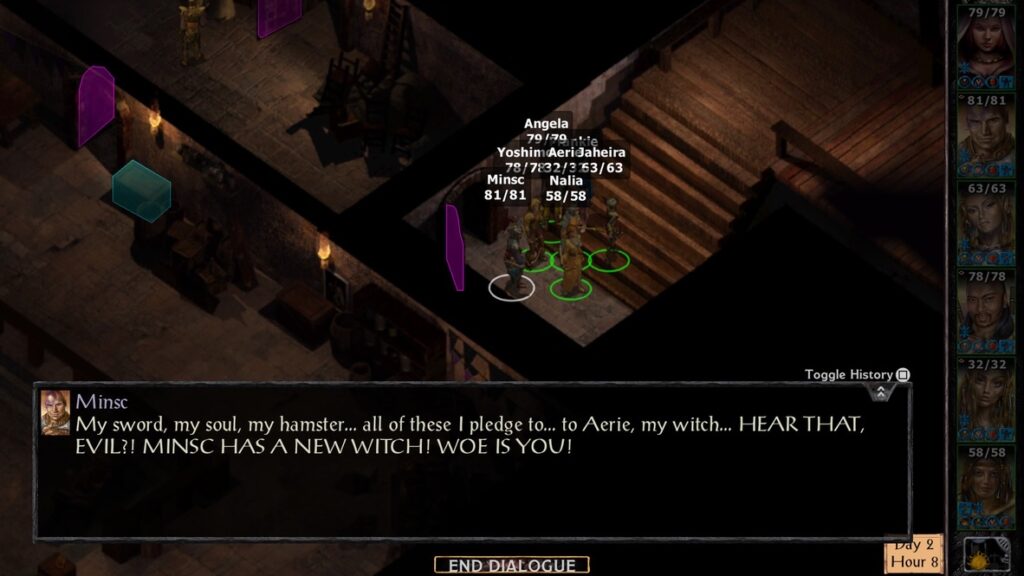
- Yoshimo – a bounty hunter who joins the party near the start of BG2. He’s completely loyal to you… until the moment in which he betrays you utterly. As I’m typing this, I learned that there was a way I could have given his soul peace in the afterlife. I’m content that I never figured this out, and that his spirit writhes in pain for eternity. (Druid Angela can forgive a lot, but even she has limits.)

In the fullness of time, with the betrayal of Yoshimo (I spit upon his name!) and the return of Imoen, the remaining slot in the party was filled by:
- Hexxat.
Druid Angela met Hexxat in a tavern. She starts as a weak person begging for help, so of course Druid Angela offered assistance. One thing led to another, and Hexxat joined the party as a regular character. It also turned out that Hexxat is a vampire.
What makes Hexxat special in this playthrough is that she was Druid Angela’s romantic interest.
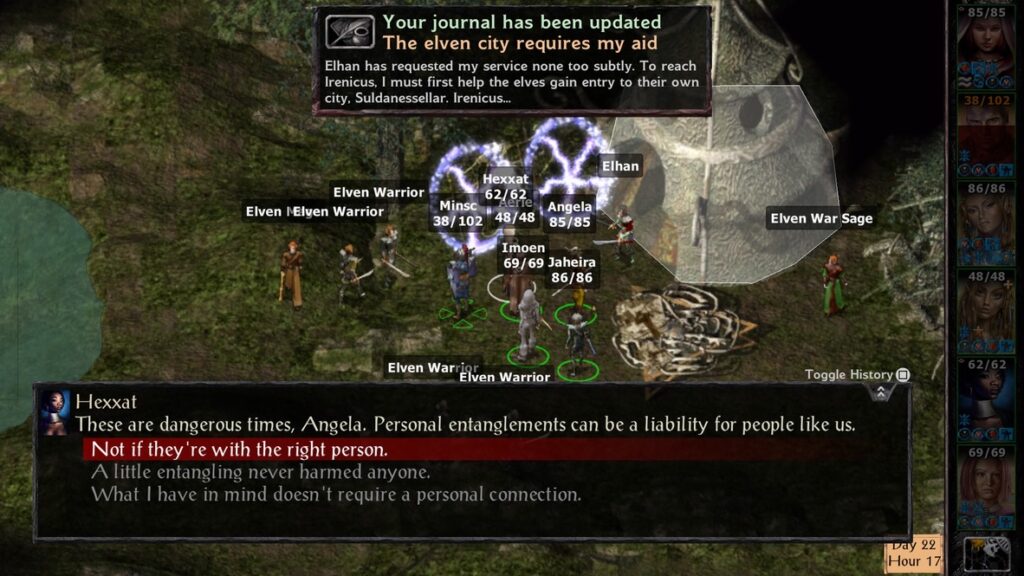
I don’t want to overstate this. The mostly-text interface does not make the ridiculous attempt at a sex scene like that in Divinity: Original Sin II. The connection is entirely expressed in dialog.
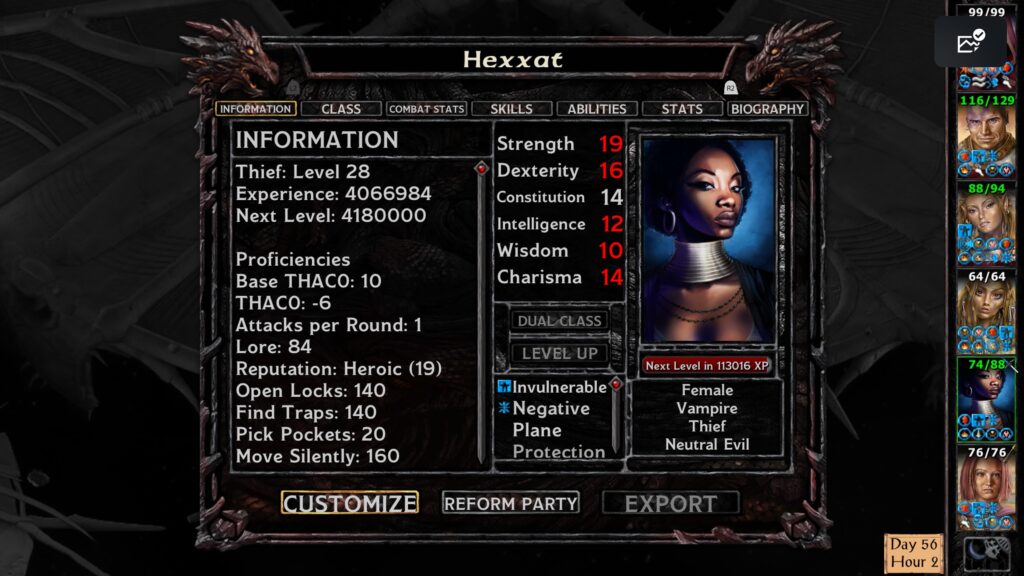

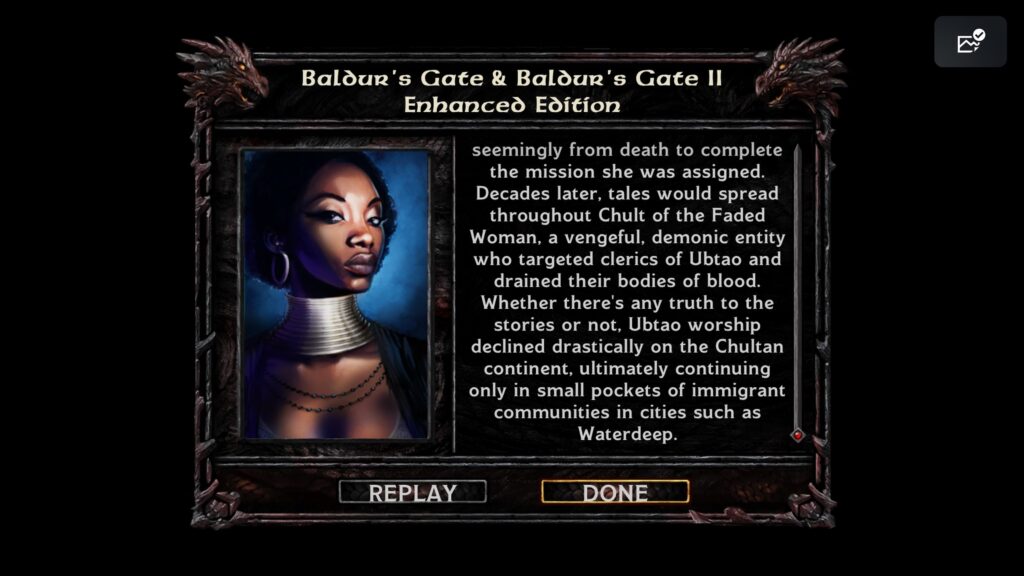
As I noted, there are many other characters whom you might choose as companions for your party.
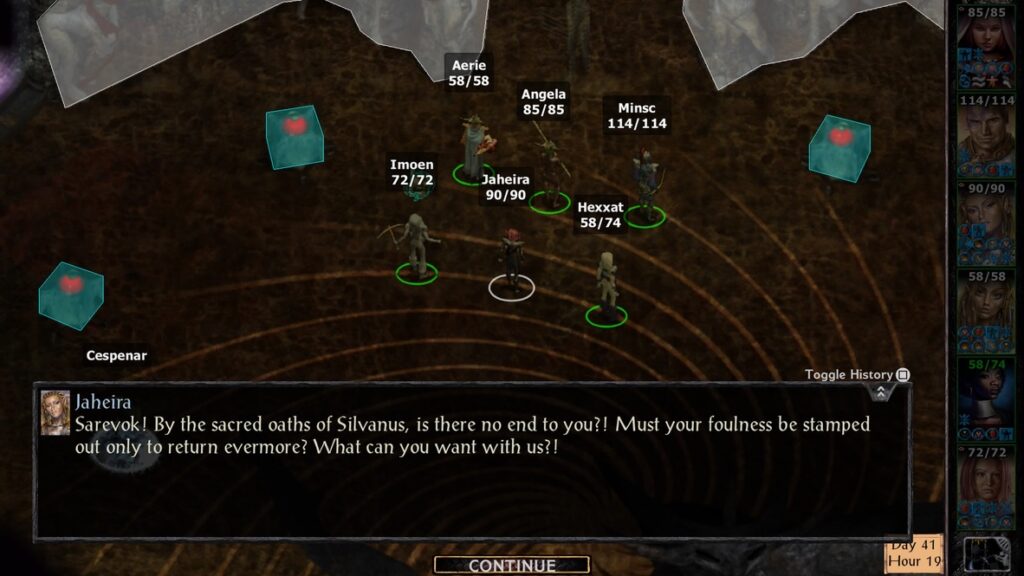
Also available is Viconia DeVir. She’s an antagonist in BG3, but is recruitable in BG1+2. In BG3 Minsc suggests that there was once a relationship between the two of them, but there’s no hint of this in the earlier games. If my party wasn’t full, I would have considered adding her just to see what happens.
Lore
I played these games to fill in the background lore I found in BG3. I was not disappointed.

These are three excepts from books I found in BG2:

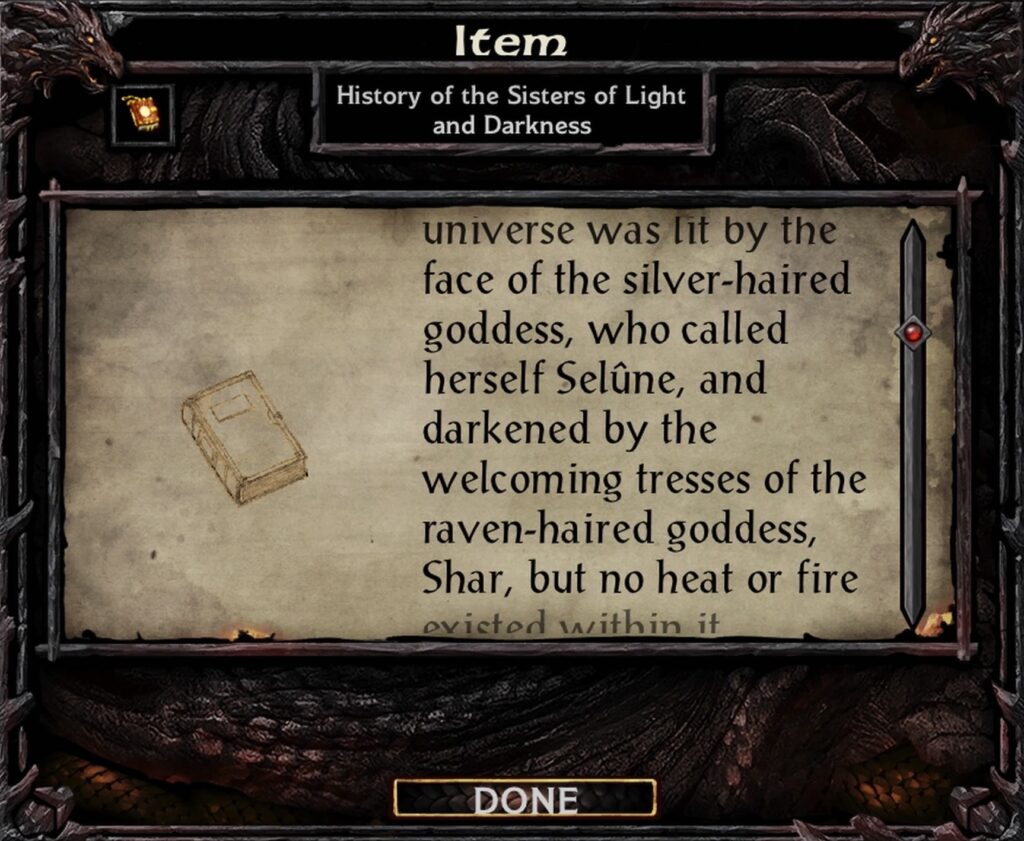

This information is very relevant to the BG3 story.
When you meet Sarevok in BG3, there are some people with him.
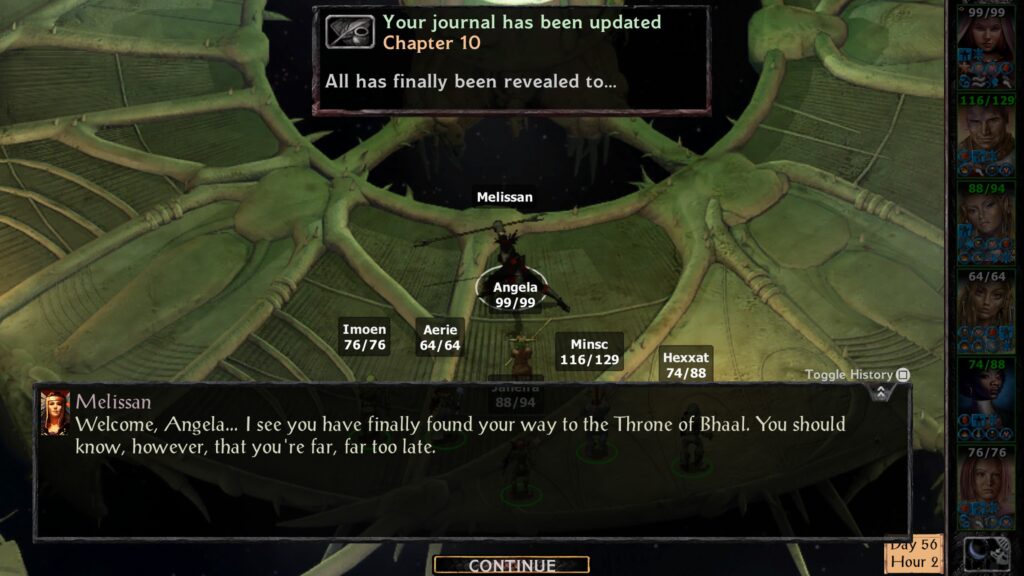
It’s possible, depending on your choices in BG3, to spend some time conversing about the past with those who accompany Sarevok. I’ve done it before, but didn’t appreciate the context of what they said. Now I do. I look forward to speaking with them again a future playthrough. I’ll have a better understanding of the events they’re talking about.
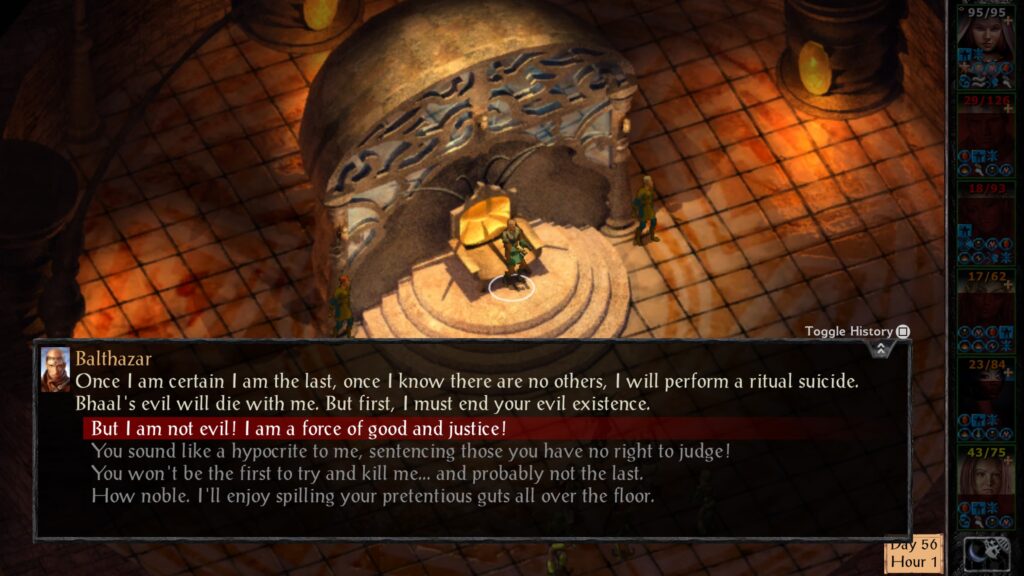
What all this means is that the writing team at Larian paid close attention to the story of the previous Baldur’s Gate games and the two-decade-old Forgotten Realms lore when they constructed the story for BG3. The result is that the game history of the past fits into the BG3 lore of the present like pieces in a jigsaw puzzle. Nice work, Larian!
Do you have to play BG1+2 in order to enjoy BG3? Absolutely not! I went through 14 playthroughs without knowing any of this background material.
In some of the commentary on BG3, I’ve read that the Dark Urge character’s story is the culmination of the story that began in BG1+2. Now that I’ve seen the earlier games, I agree.
That doesn’t mean it’s necessary to play the Dark Urge to appreciate BG3. The way I look at it: If you read the Forgotten Realms books and rulebook histories, you’ll find the events in BG1+2. In those “canonical” sources, the name of Gorian’s Ward is Abdel Adrian. If one were to write the “canonical” story of the events in BG3, it would probably follow the path of the reformed Dark Urge character to be consistent with the previous treatment of the games in the lore.
Voices
In BG1+2, some of the text you see in the screen shots is voiced:
- All battle cries (like “Go for the eyes!”) are voiced.
- Idling banter (like like the oft-repeated “Hamsters and rangers everywhere, rejoice!”) is voiced.
- A few high-drama interactions are fully voiced, in the sense that you hear the words of the other characters. Your character’s words are not voiced.
- Some moderately-important text is partially voiced, usually only the first sentence or two in a longer speech.
- Most of the low-importance characters or conversations are not voiced.
There are some characters in BG1+2 who are also present in BG3. What surprised me is how closely their voices recorded 25 years ago matches those of today, even though different actors were involved. If I hadn’t looked it up in the credits, I might have assumed that the same actors were performing.
Since I like to give credit where credit is due (links are to web pages with complete actor credits):
| Character | BG1+2 | BG3 |
|---|---|---|
| Jaheira | Heidi Shannon | Tracy Wiles |
| Minsc | Jim Cummings | Matthew Mercer |
| Elminster | Frank Welker | Crispin Redman |
| Sarevok | Kevin Michael Richardson | Redd Pepper |
| Volo | Rob Paulsen | Stephen Hogan |
| Abazigal | Jim Cummings | Andrew Spooner |
| Amelyssan | Heidi Shannon | Harriet Kershaw |
| Illasera | Grey DeLisle | Fenella Fudge |
| Sendai | Vanessa Marshall | Jane Slavin |
In preparing this table, I noted that many of the actors who supplied voices in BG1+2 are still working in the field today; e.g., Rob Paulsen is voice of Pinkie in Pinkie and the Brain. I suppose, in theory, Larian could have gotten the same actors for BG3. However I can think of some good reasons why not:
- BG1+2 were developed by an American game company, Interplay Entertainment. Larian Studios is headquartered in Belgium; most of the voice recording for BG3 was done in Britain.
- BG3 used motion captures of the actors in the cutscenes. With all due respect to performers of the original games, I can imagine that Larian would prefer to work with younger actors who’d be up to the physical challenge of mo-cap.
- There’s such a thing as “passing the torch”. The original performers did great jobs, but it might have seemed time to let a new group of actors have their chance. If this was part of their reasoning, it worked spectacularly: The careers of all the main actors who worked on BG3 have skyrocketed.
A moment of truth: Although I included the character in the above table, I never met Volo in BG1+2. I know the character is present in Baldur’s Gate and Baldur’s Gate II: Throne of Bhaal, but I didn’t manage to visit his location.
A moment of honesty: The vocal characterizations of the last four characters in the list are not that memorable. I could not tell you if the voice of, let’s say, Abazigal in Throne of Bhaal matches that of the vendor you might meet in BG3. Characters are characters, actors are actors, and credit is credit. However, I don’t know if the same amount of effort was spent on vocal characterizations of those four characters as was spent on, e.g., Minsc.
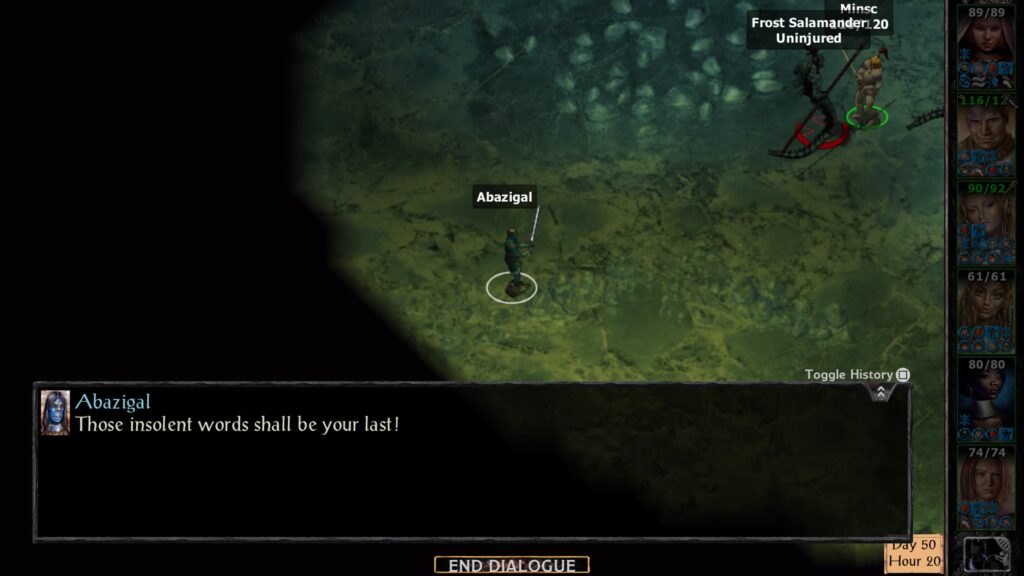
On the PS5, when you earn an trophy or achievement in a game, the console automatically records the 15-second interval around it. Here’s the recording of a trophy I got that I didn’t want: Villain. It appears solely to do with being forced to fight some Flaming Fist. In the recording, although it’s fainter the rest of the audio, you can hear Minsc complaining about the deed. You can judge for yourself how closely Jim Cummings’ performance recorded 25 years ago compares with Matt Mercer’s.
(I think this “achievement” was an error of some sort. By the end of the game, Druid Angela had a 19 reputation. The Villain Trophy is given if your reputation reaches 1.)
Images and notes
Here are some screenshots of things that I found to be fun or interesting as I played the game.

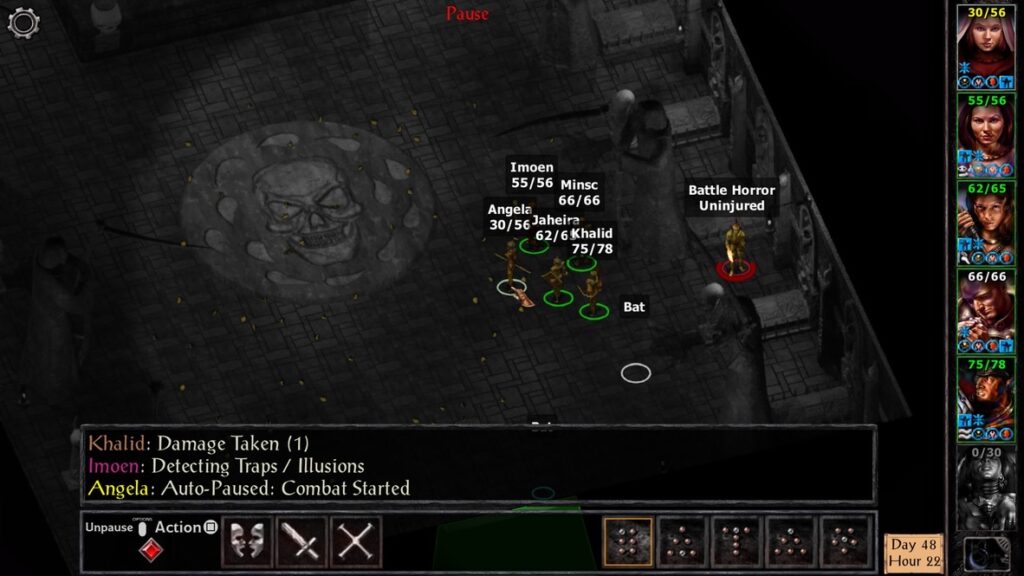
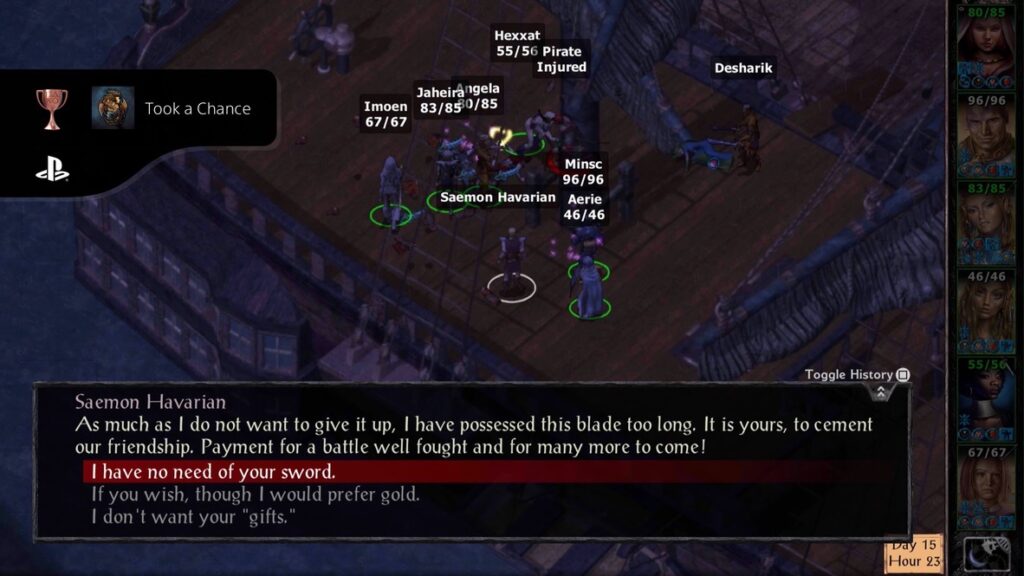
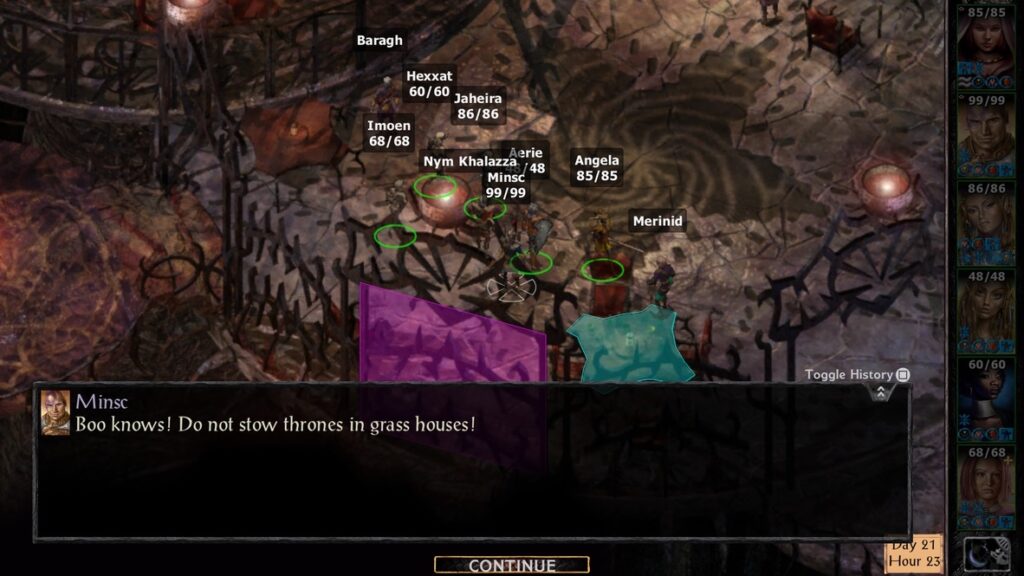
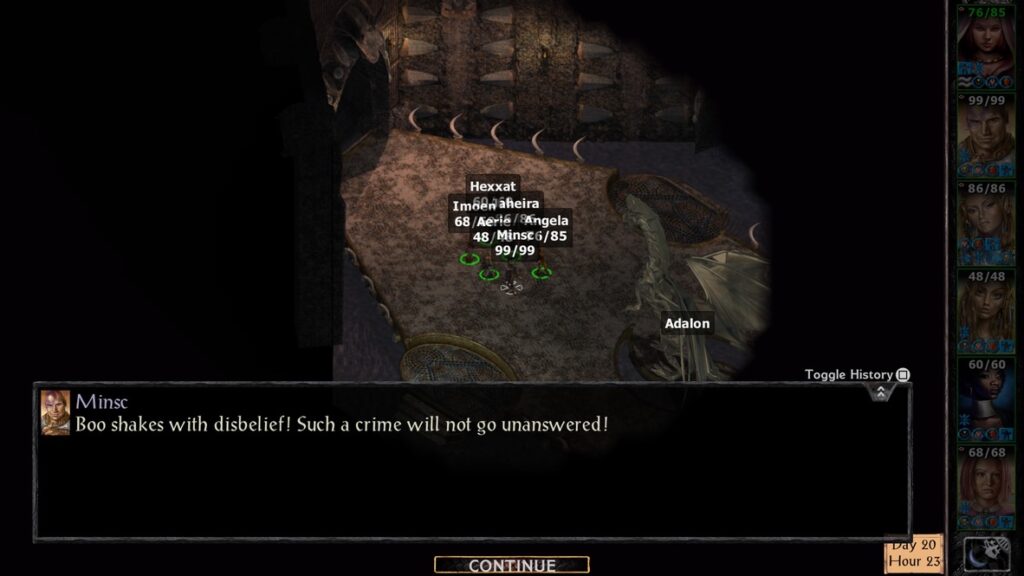
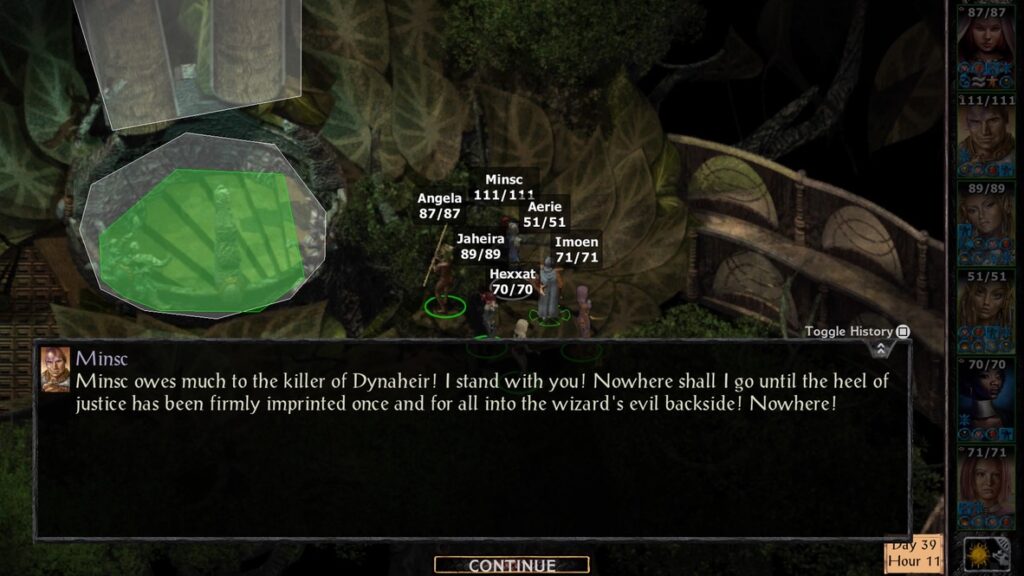
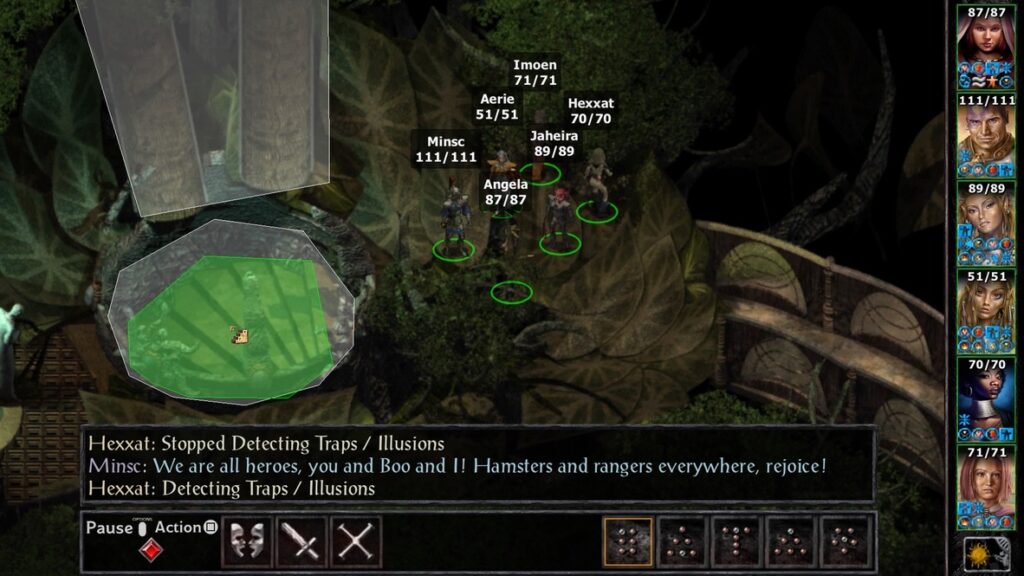
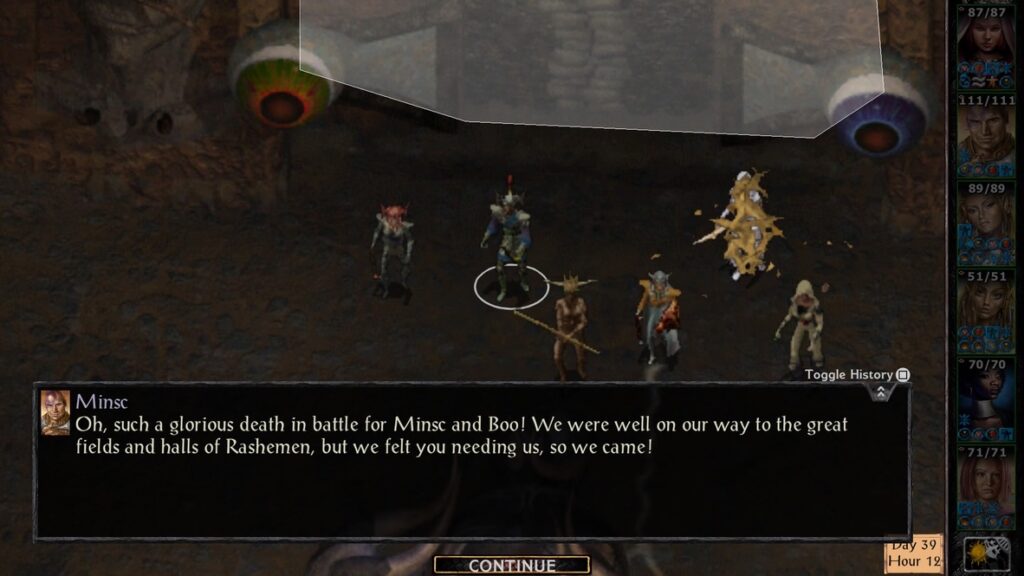
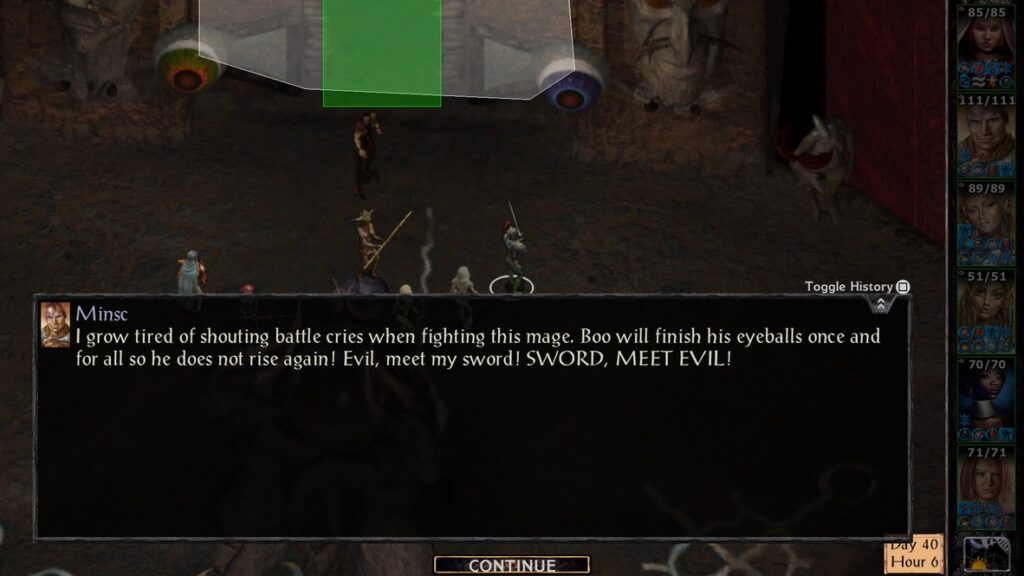


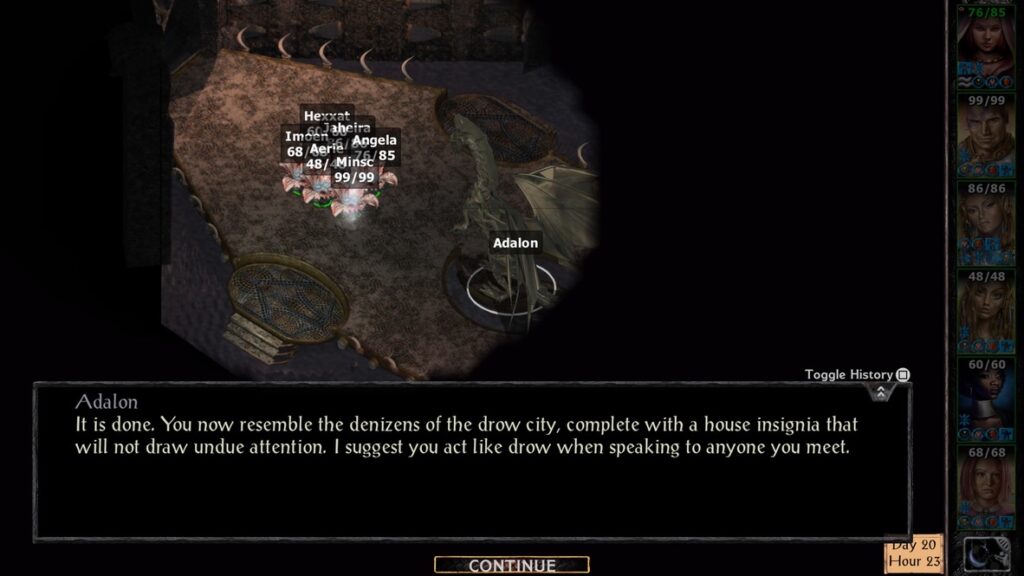
Let’s have a bit of banter, shall we?

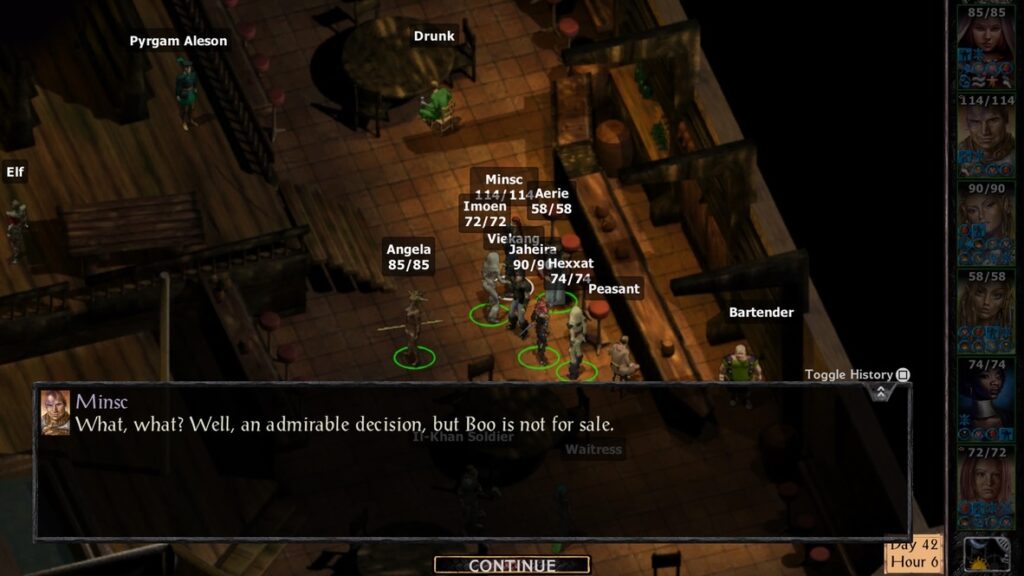
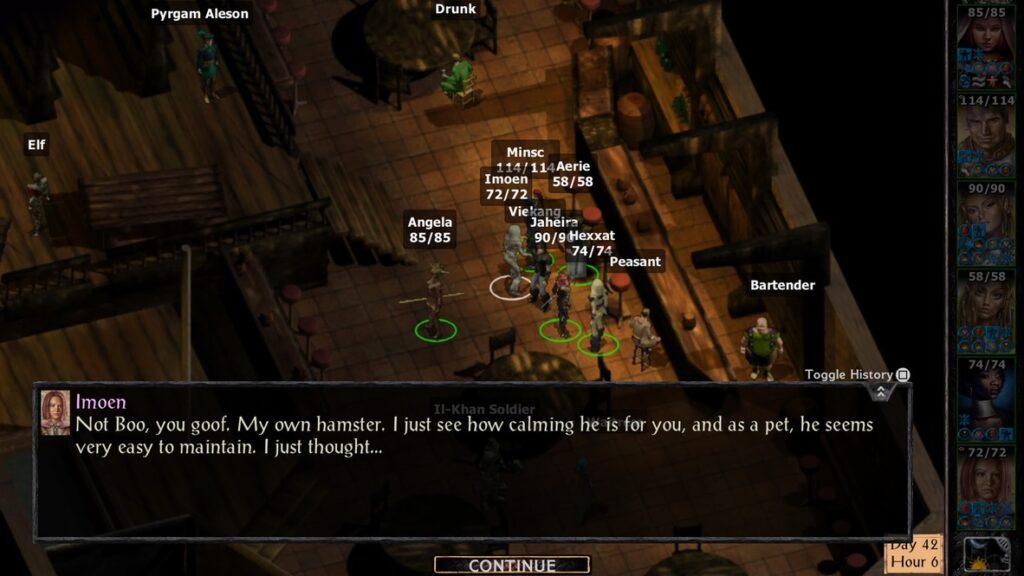
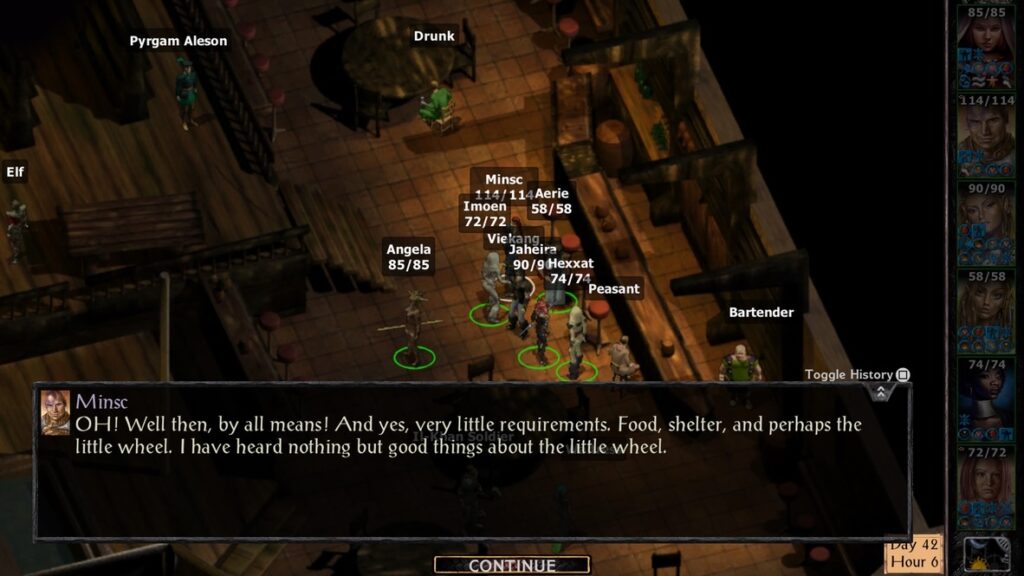
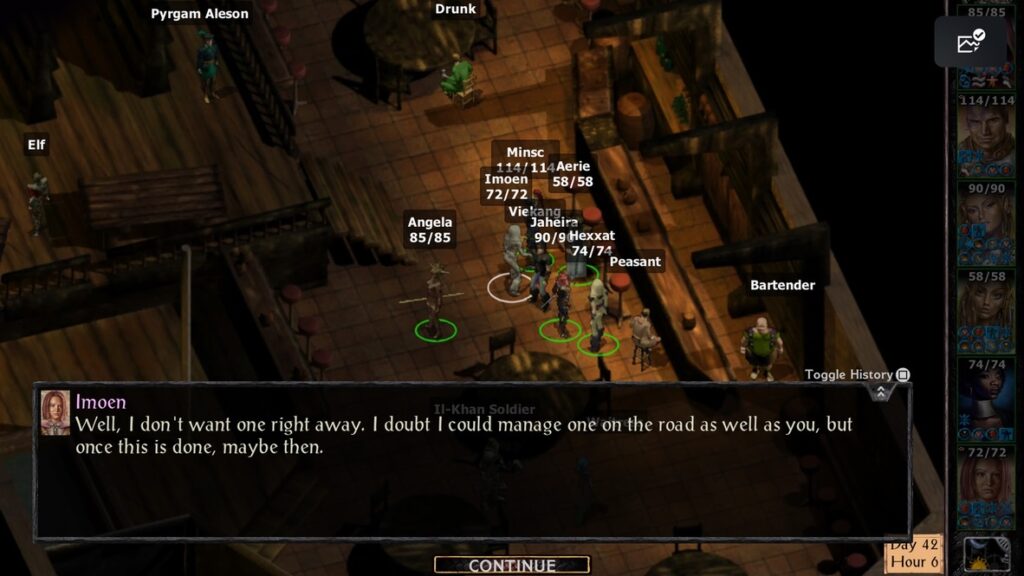
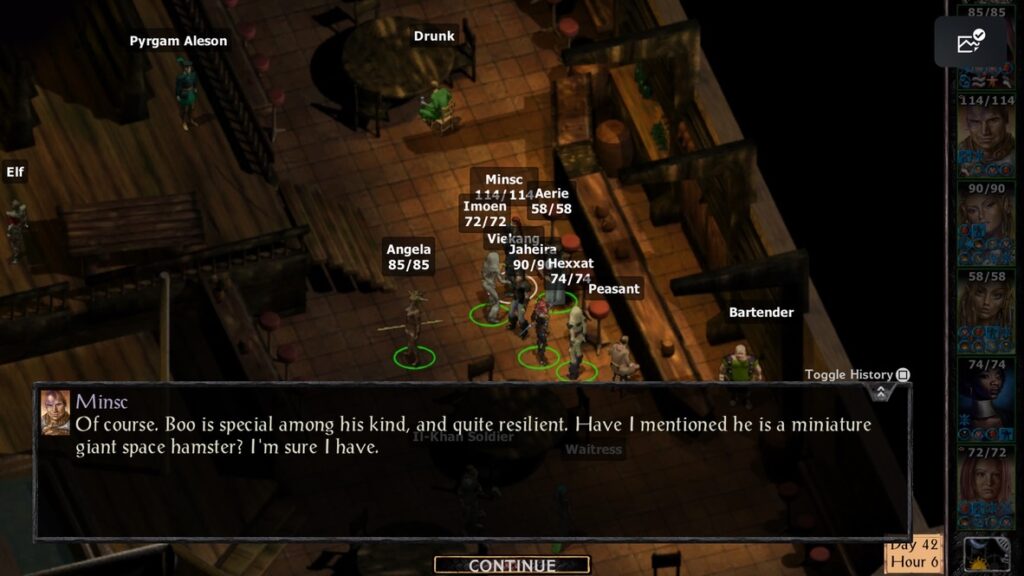
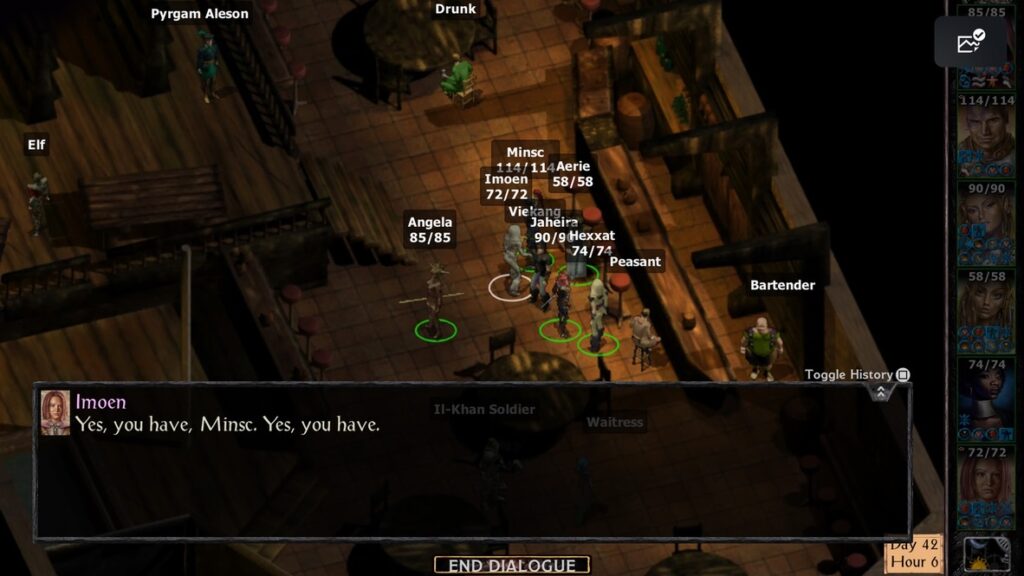
Near the end of BG3, you have the chance to give an inspirational speech. In the fullness of repeated playthroughs, if Minsc is in your party you can ask him to give the speech instead. The following two images give context to what Minsc says 200 years later:

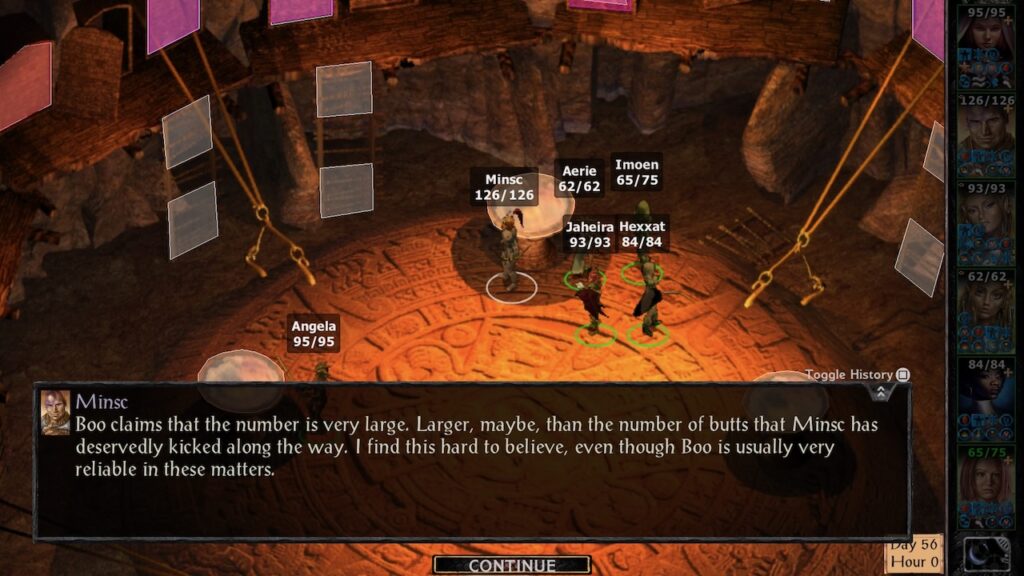
Bhaalspawn

The god Bhaal, Lord of Murder, looms large over the entire Bhaalspawn Saga. All of the major antagonists are either children of Bhaal (“Bhaalspawn”) or wish to share his powers.
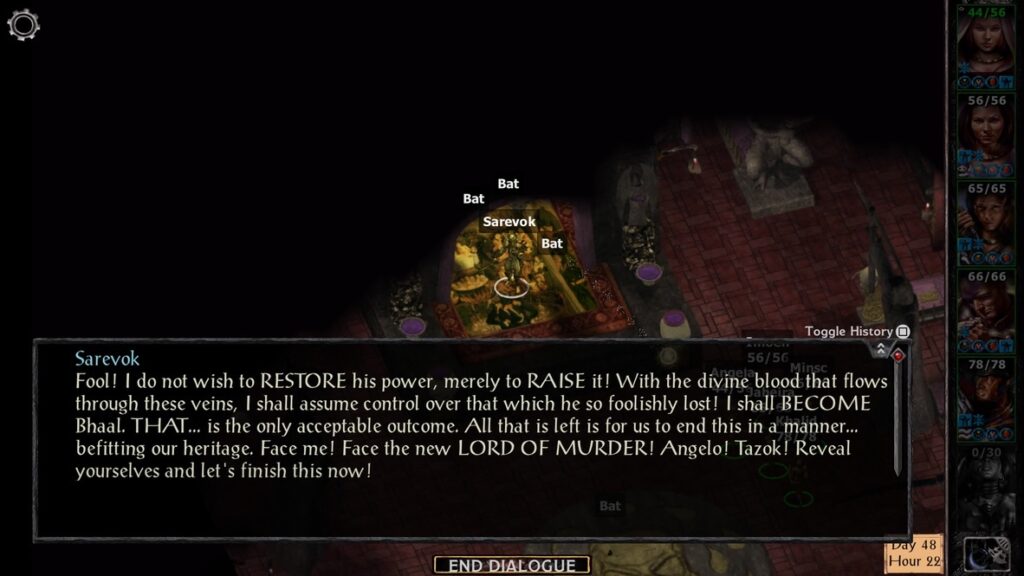
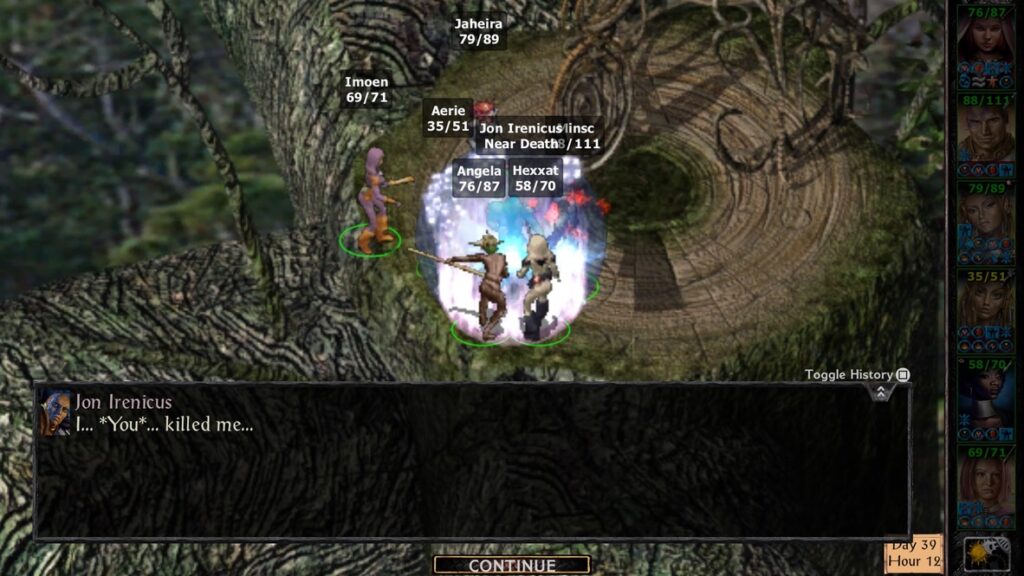
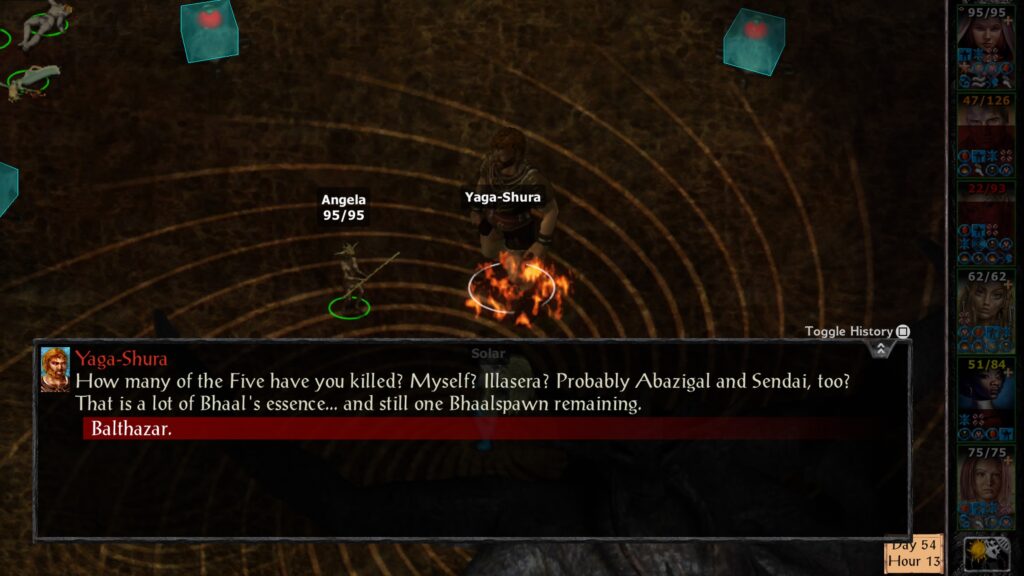
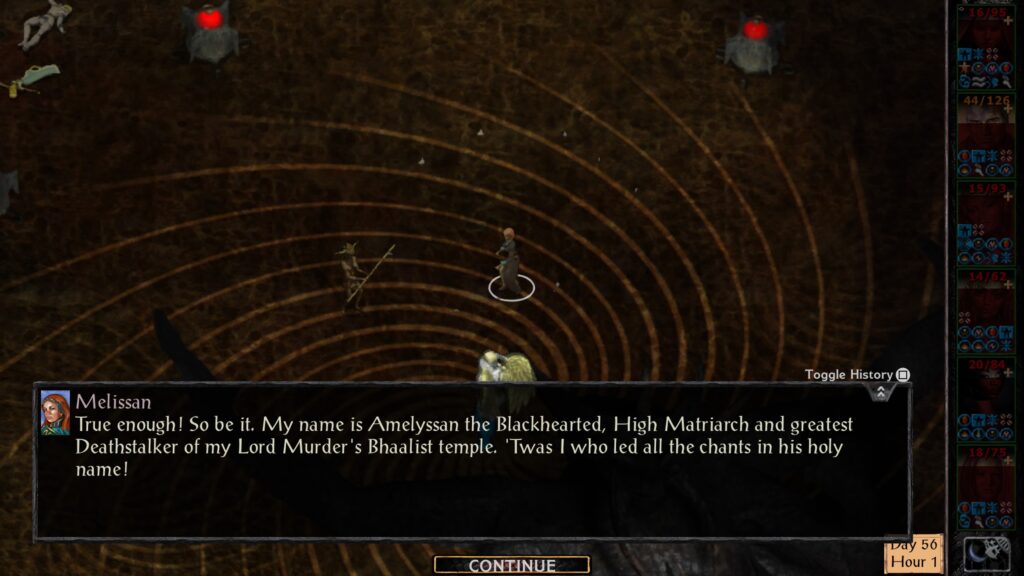
There are two more Bhaalspawn to add to the list.
One is Imoen, who discovers that she’s also a daughter of Bhaal. Through a sequence of events in Shadows of Amn, Bhaal’s power is drained from her. She’s living proof that one can be good even if one of their parents is a death god.
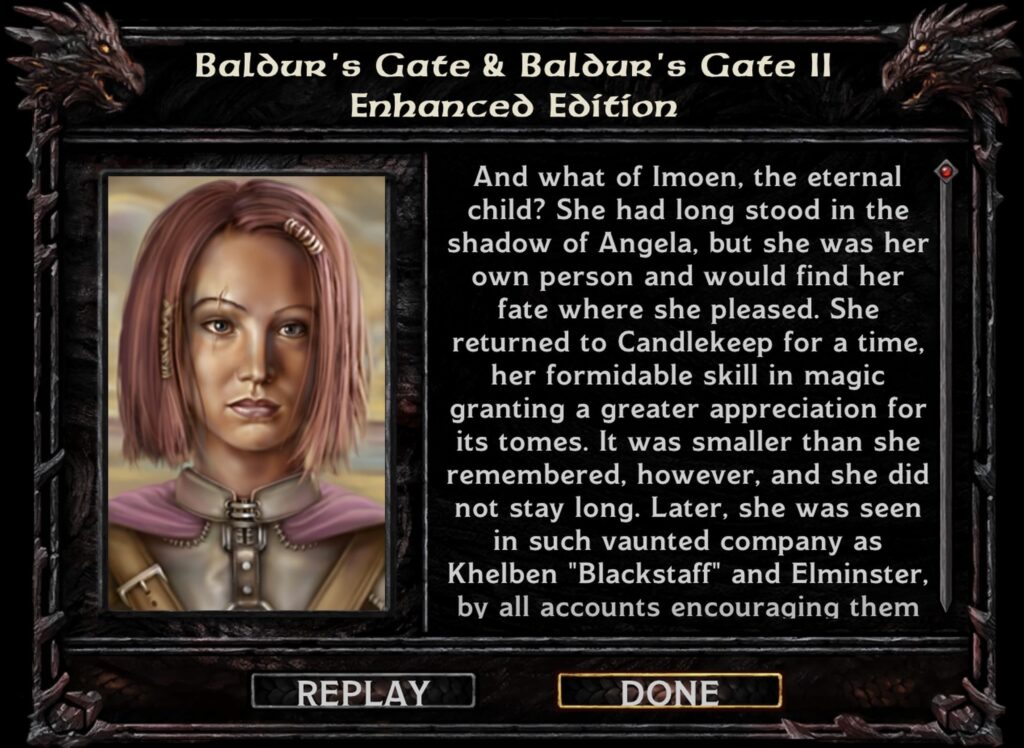
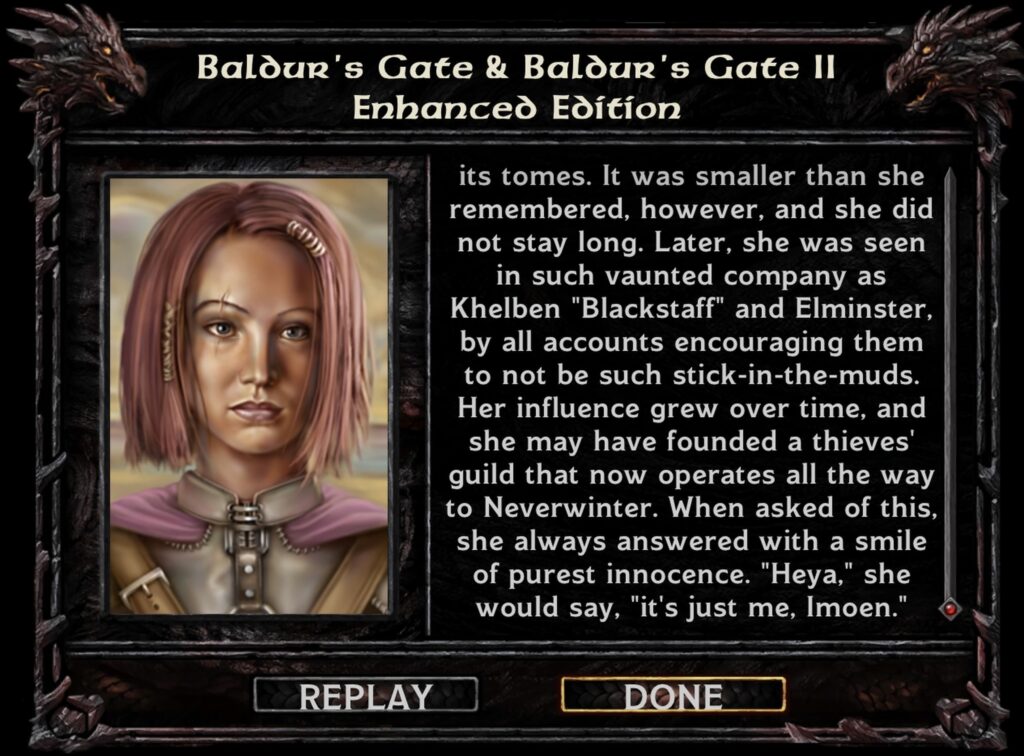
I’m sure you’ve already guessed who the final Bhaalspawn is: you. That is, it’s Garion’s Ward, the character you play in the Bhaalspawn Saga. In my case, that’s Druid Angela.

The Story of Druid Angela

For any writer of fanfic, the chance to unite the stories of these games across different titles and playthroughs is impossible to resist. Druid Angela transitioned from a Hero Hireling in playthrough 8 into a spirit fighting evil across different dimensions and probabilities.
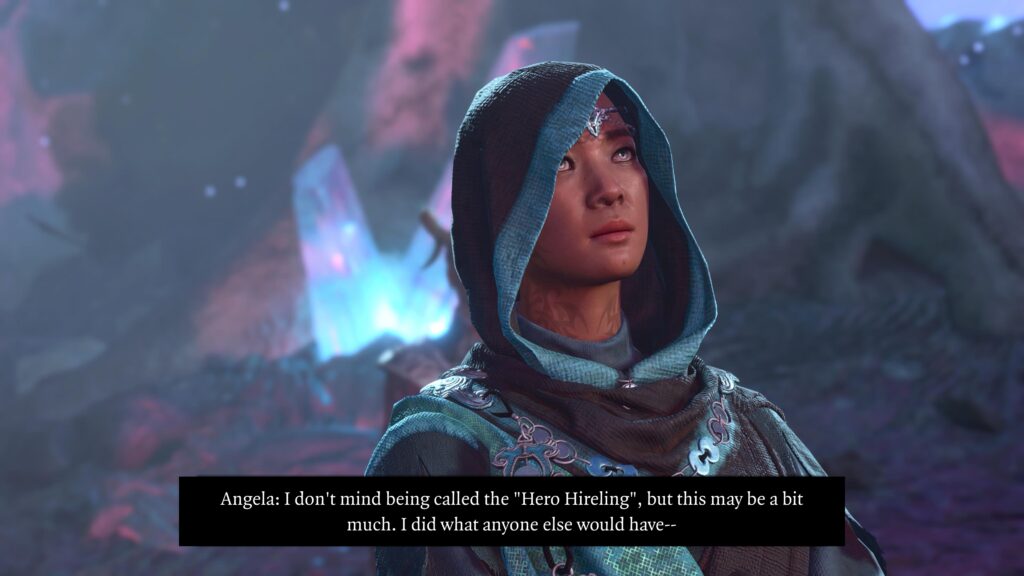
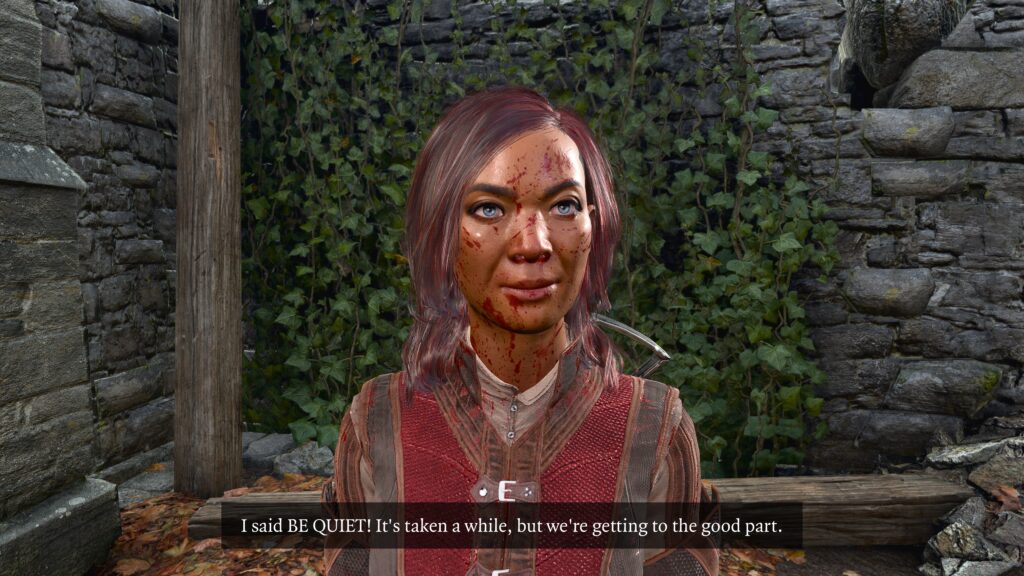
In Throne of Bhaal, Gorion’s Ward has visions of their past, present, and potential futures. Those visions are now tied to Druid Angela.

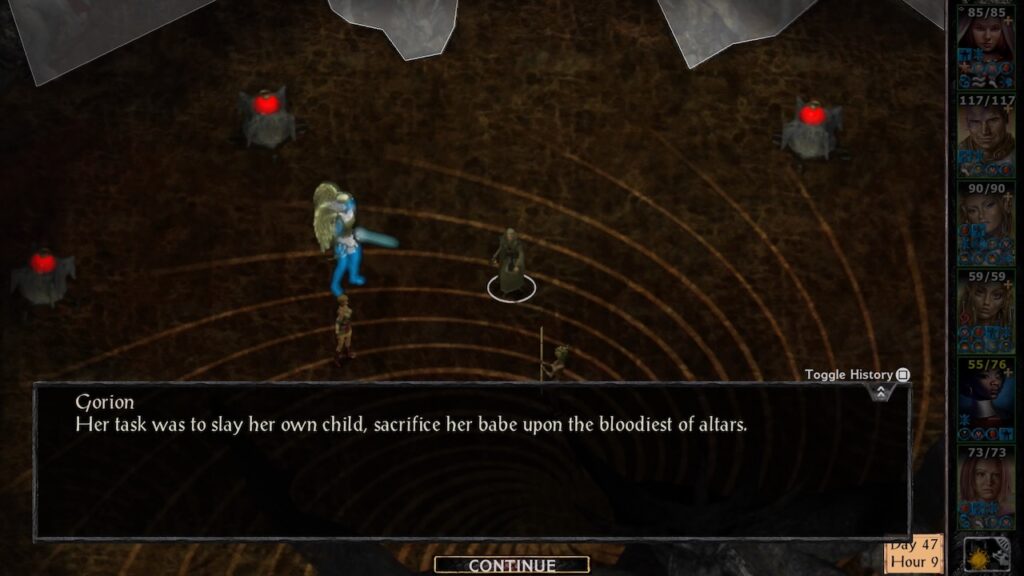


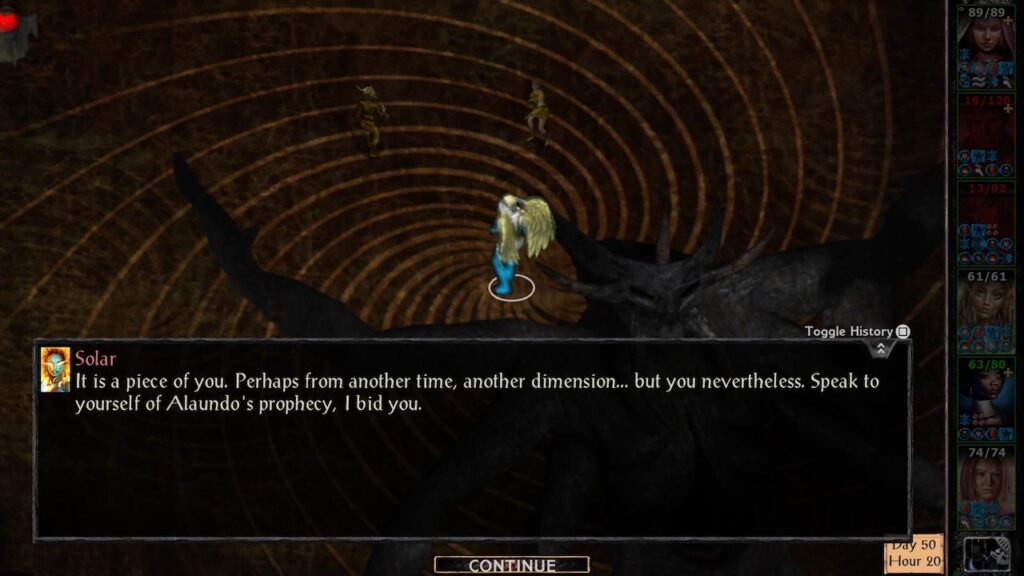
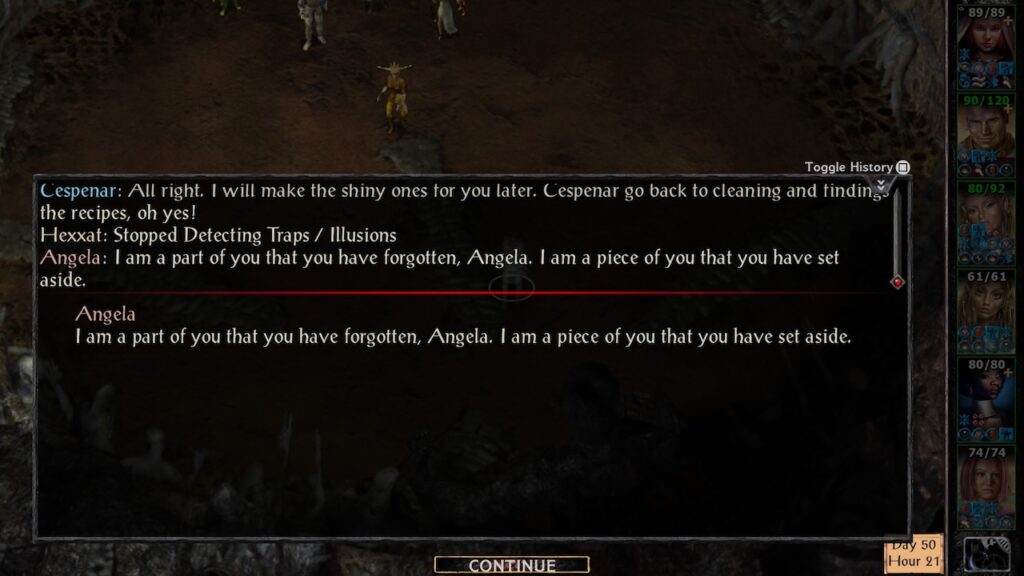
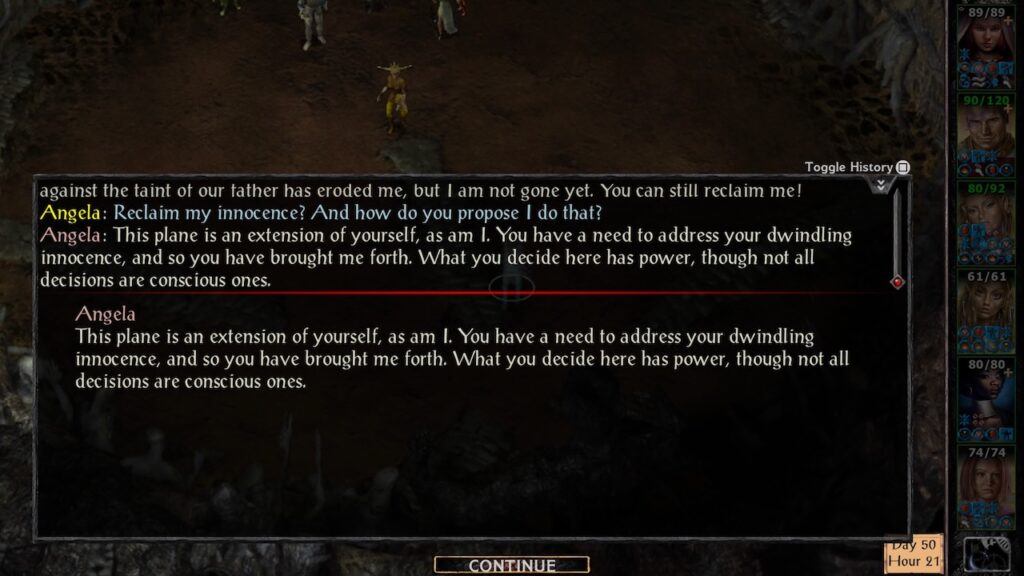
That exchange made me think–
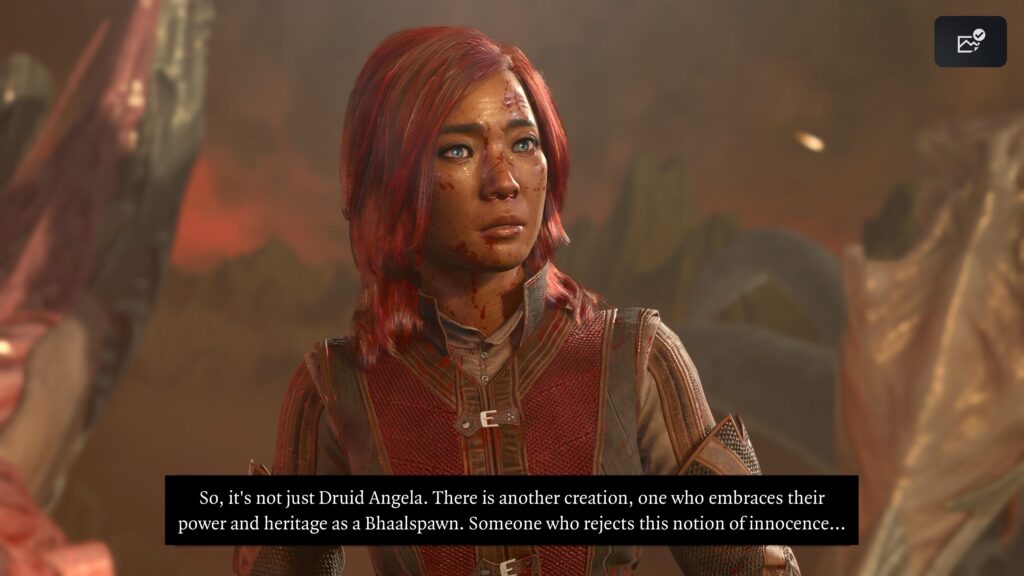
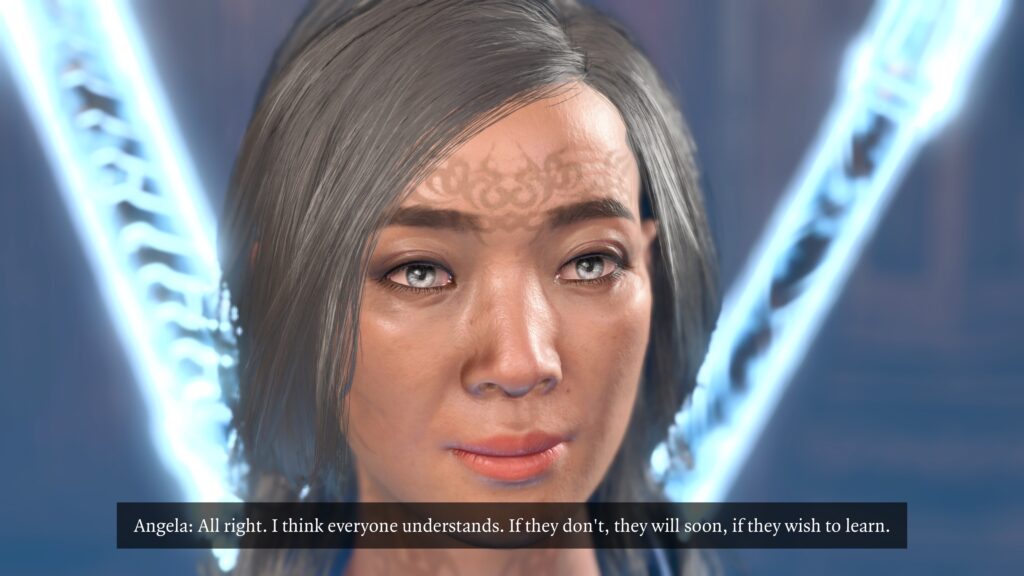
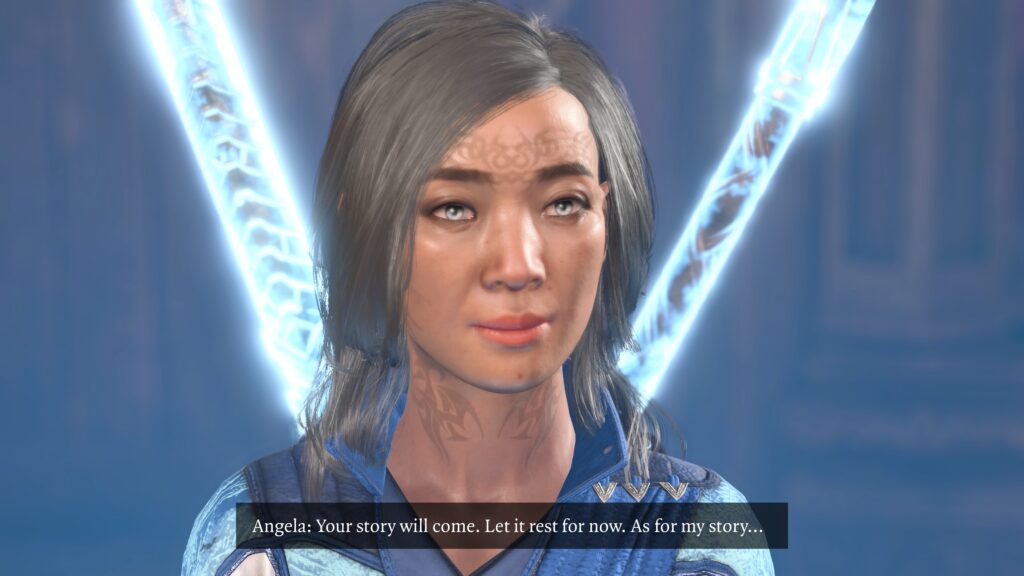

At this point, Druid Angela had a choice: To reject Bhaal’s powers utterly and become human, to accept the power of Bhaal and rule as Lord of Murder, or to accept the power but reject the taint of the Bhaalspawn.
You can guess the choice she made.


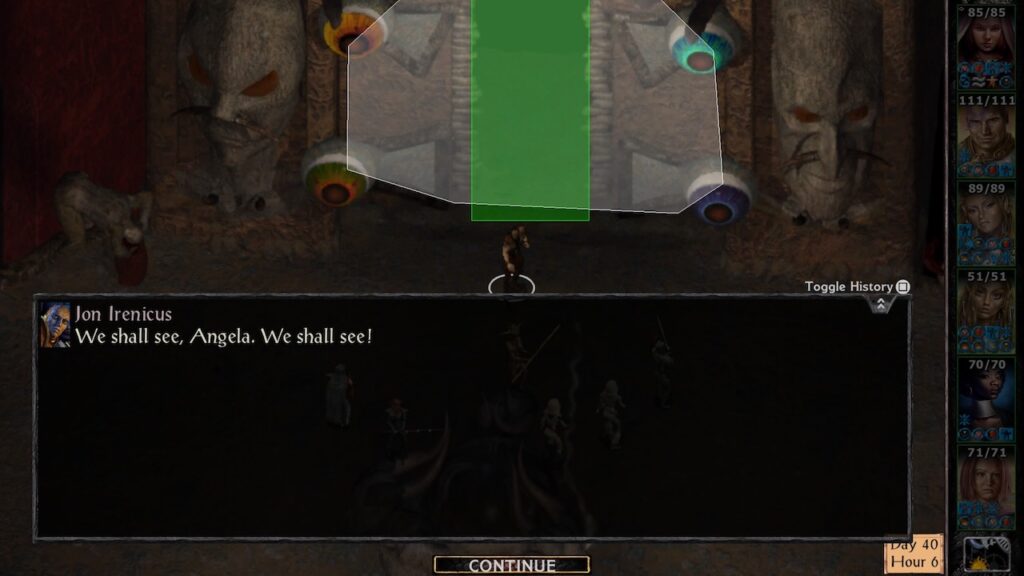
As for Druid Angela herself…
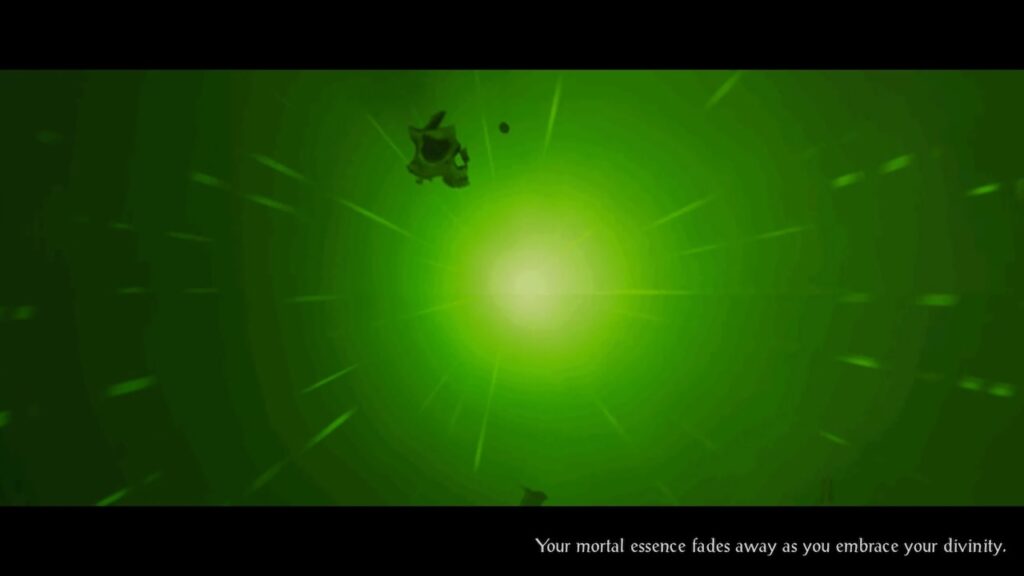

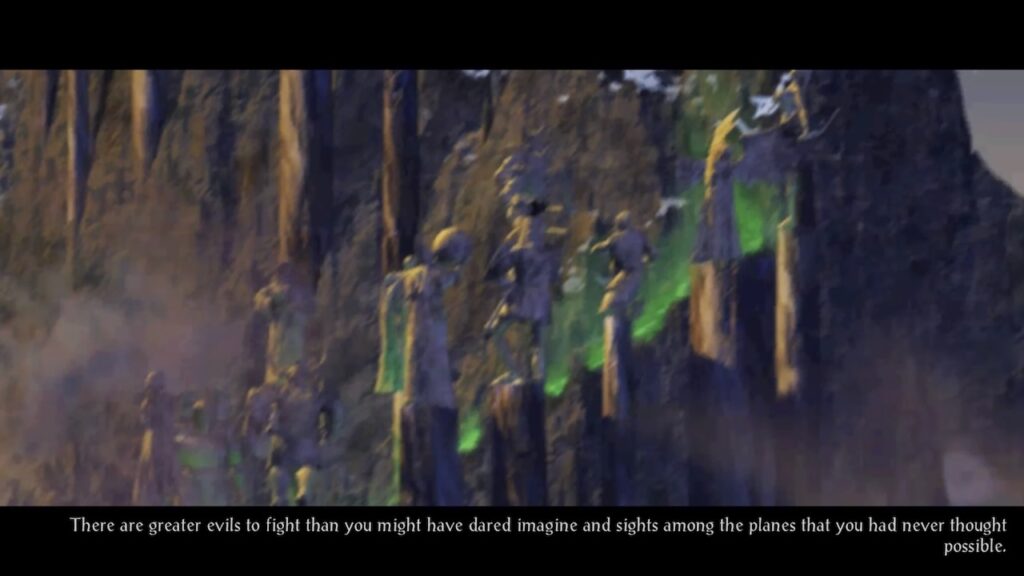
![]()
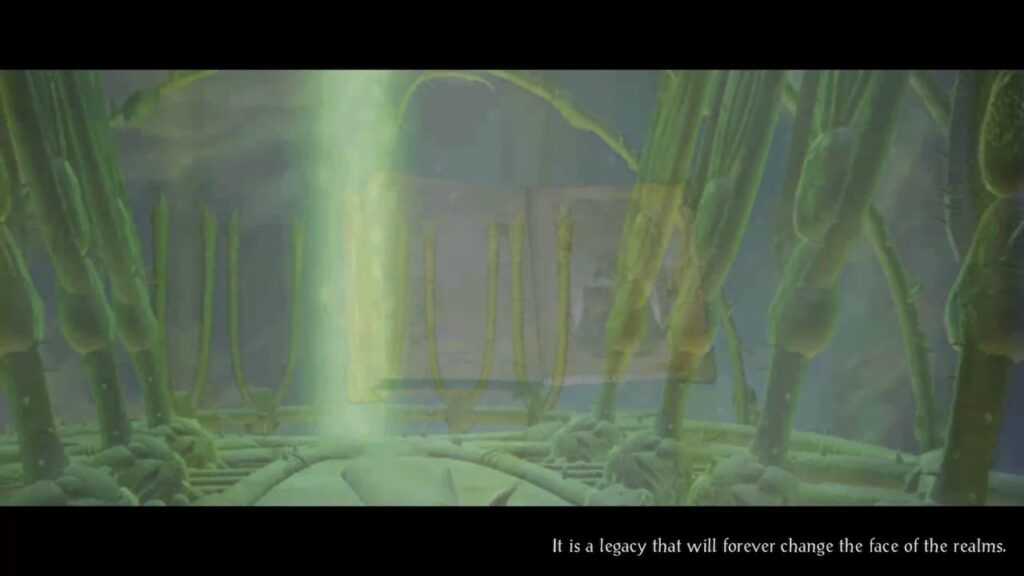
From game to fanfic
This explains why Druid Angela was surprisingly effective, more than would be expected from a mere hireling or an Arctic Druid. It explains how she evolved into an egregpre.
Perhaps Withers summons other hirelings from the Fugue Plane, as he says. But if he’s told to summon Druid Angela, he reaches out for the being he’s summoned before, and will summon again. Care to comment, Withers?
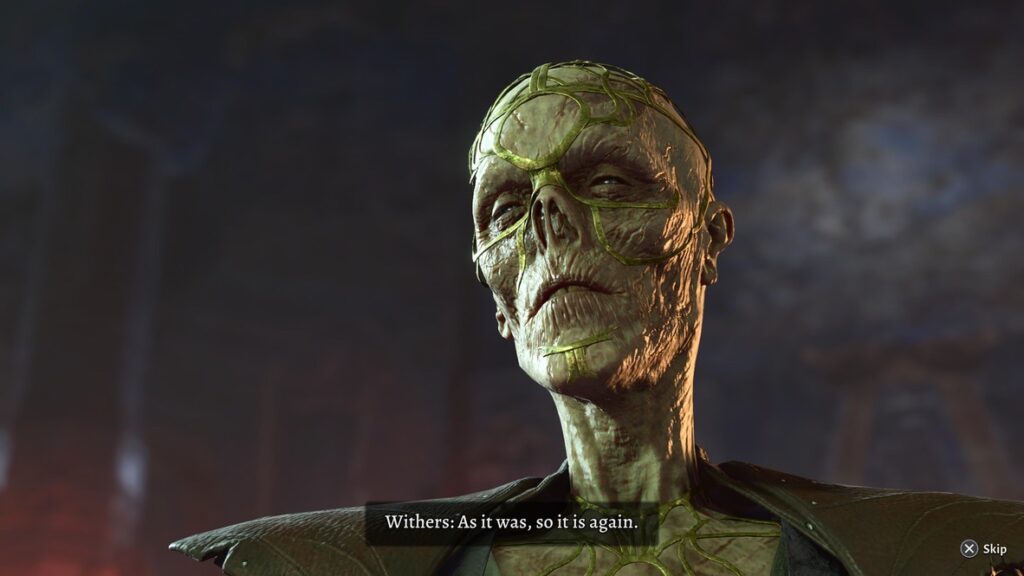
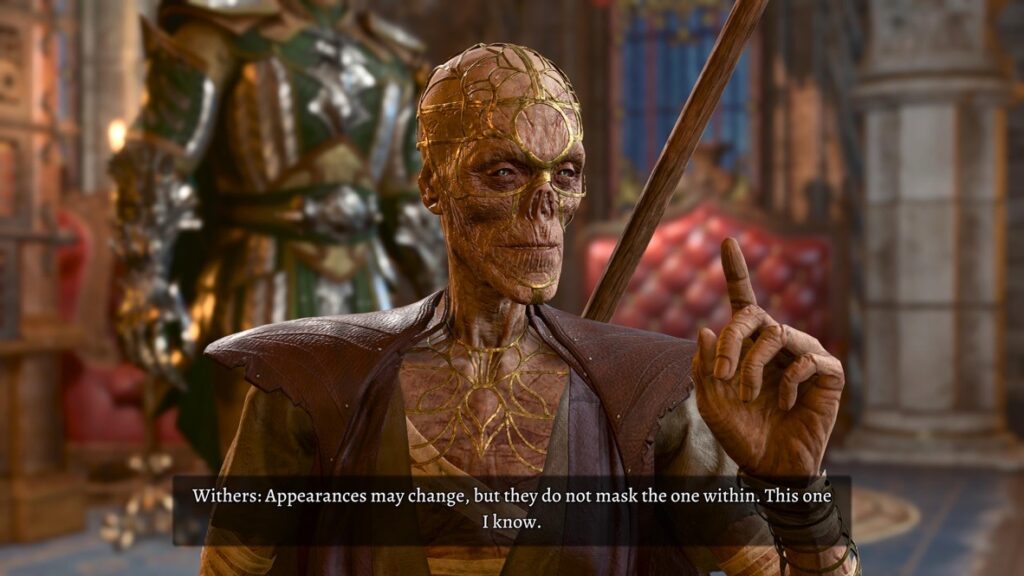
Care to explain why?

Bizarrely, it explains why Jaheira and Minsc did not recognize her 200 years later: Every time it’s a different realm, another evil that must be fought.
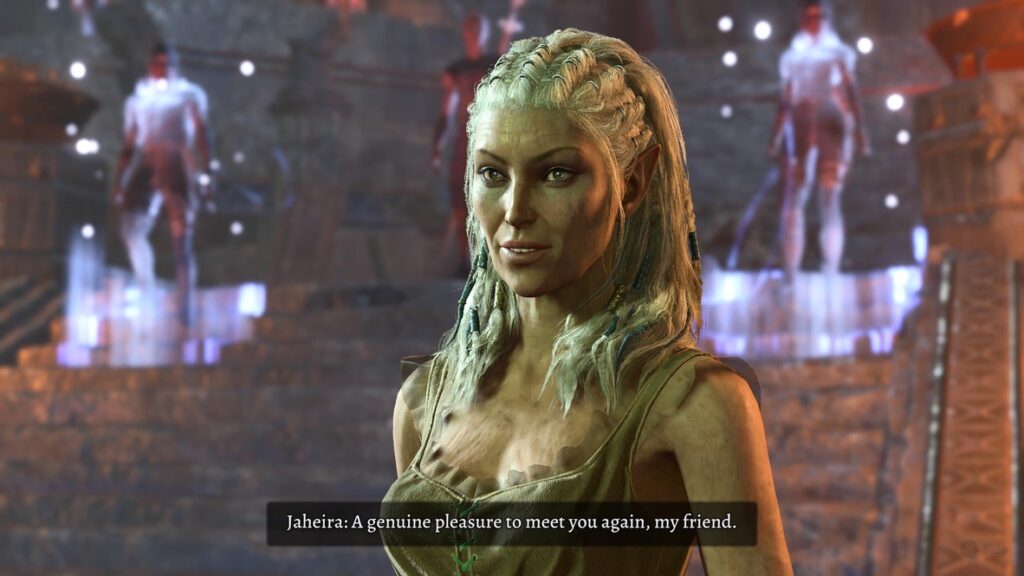
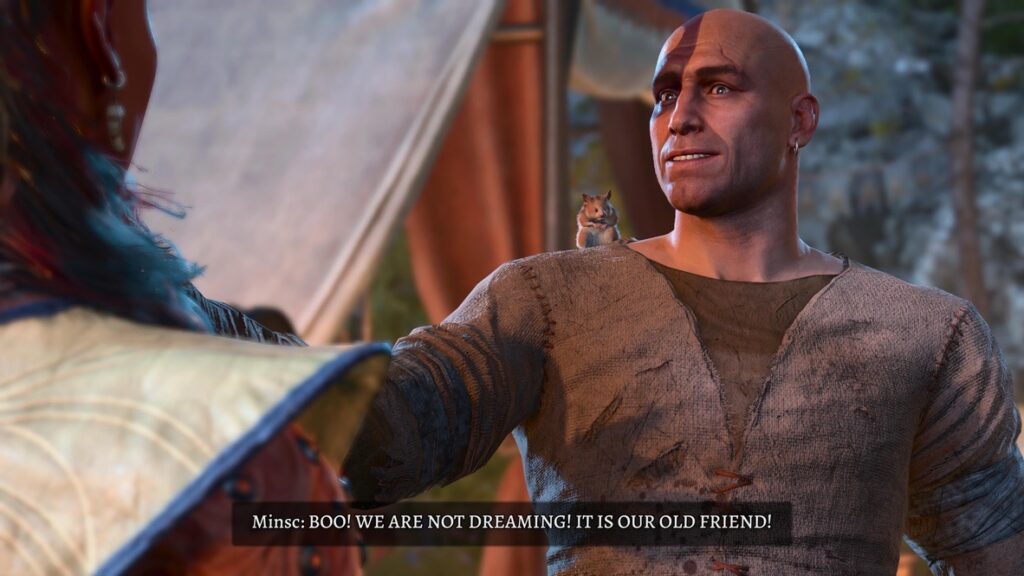
Perhaps for them Gorion’s Ward was Abdel Adrian, or another. For Druid Angela, the pasts don’t matter. The fight against Evil is not about remembering her name, but what she stands for.
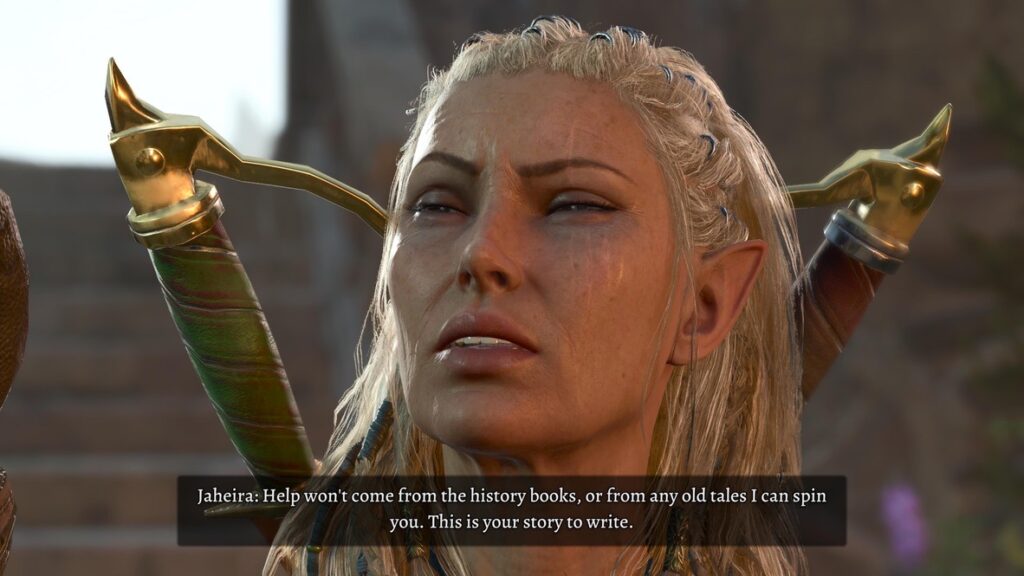

My thanks to Druid Angela, for her permission to share her story from either 25 years ago or two centuries ago, depending on you reckon time.
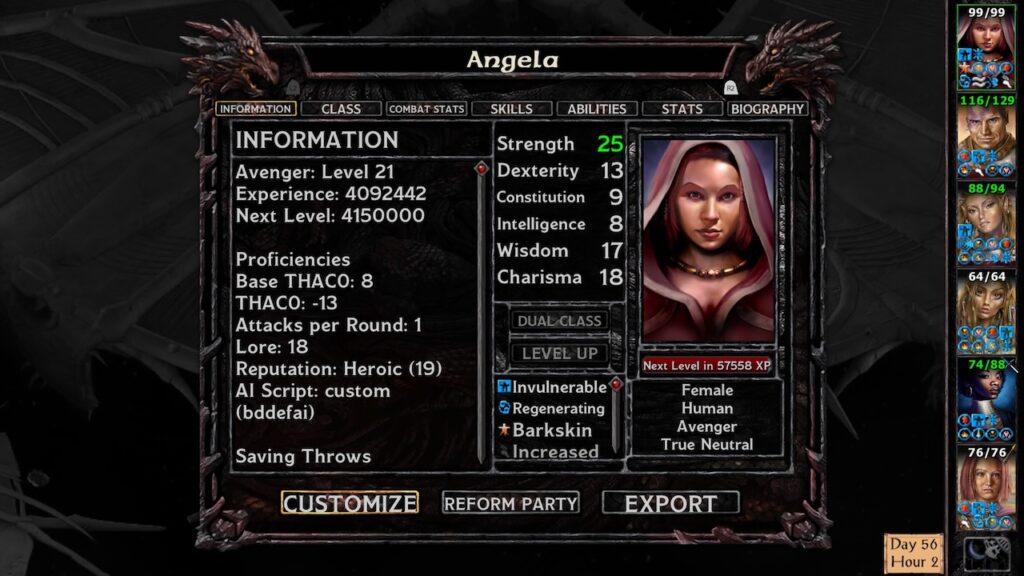
Druid Angela will appear again, in my write-up of playthrough 1/16 if not sooner.